

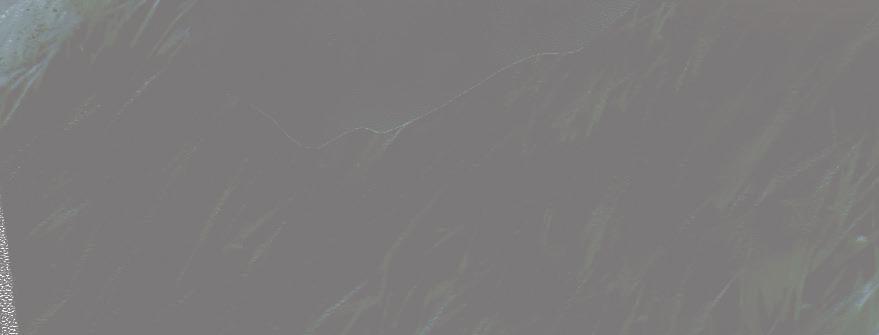
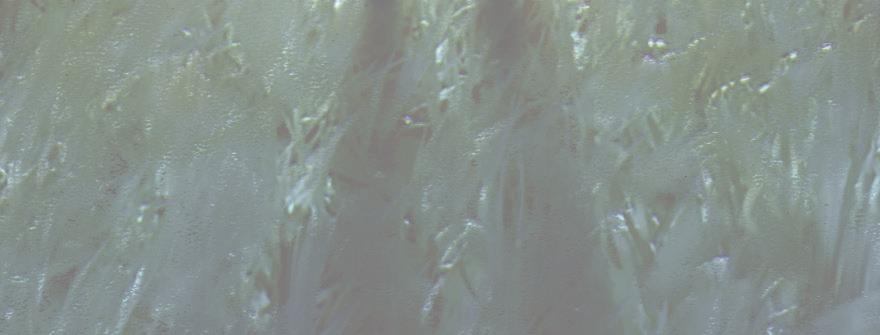

VOL. 31// ISSUE 12 OCTOBER 11, 2023 6 4 7 18 4 B.C. IS BURNING 6 THE LIFE SUBLIME 7 NATURE PATHS ECO THEATRE 18 Hopping for a better world since 1993 Hopping for a better world since 1993




Editor-in-Chief
Brad Duncan brad@ufvcascade.ca
Production Manager Sherryl Agingu sherryl@ufvcascade.ca
Business Manager Marie-Ange Routier marie-ange@ufvcascade.ca
Culture Editor Jayden Talvio jayden@ufvcascade.ca
Digital Media Manager Wilson Agyapong wilson@ufvcascade.ca
Features, Cover & Illustrator Gaurav Gomes gaurav@ufvcascades.ca
Asst. Digital Media Manager Anisa Quintyne anisa@ufvcascade.ca
Snapshot Illustrator Iryna Presley iryna@ufvcascade.ca
Staff Writer Gauri Sethi gauri@ufvcascades.ca
Staff Writer Veronica Powell veronica@ufvcascade.ca
Staff Writer Allana Quigley allana@ufvcascade.ca


Managing Editor Matthew Iddon matthew@ufvcascade.ca
Creative Director Gabriela Gonzalez gabriela@ufvcascade.ca
News Editor Rachel Tait rachel@ufvcascade.ca
Copy Editor Aasha Khoyratty aasha@ufvcascade.ca
Features Editor Brad Duncan brad@ufvcascade.ca
Arts Editor Gianna Dinwoodie gianna@ufvcascade.ca
Sports Editor Teryn Midzain teryn@ufvcascade.ca
Production Assistant Diana Blanco diana@ufvcascade.ca
Distributor Kirat Dhami kirat@ufvcascade.ca
Community Engagement Coordinator Sabrina Morgan sabrina@ufvcascade.ca
WWW.UFVCASCADE.CA @cascade_fy FACEBOOK.COM/UFVCASCADE INSTAGRAM.COM/UFVCASCADE TIC TOC/UFVCASCADE
Volume # · Issue # Room S2111 33844 King Road Abbotsford, BC V2S 7M8 604.854.4529
The Cascade is UFV’s autonomous student newspaper. It originated under its current name in 1993, and achieved autonomy from the university and the Student Union Society in 2002. This means that The Cascade is a forum for UFV students to have their journalism published in an entirely student-run setting. It also acts as an alternative press for the Fraser Valley. The Cascade is funded with UFV student funds, and is overseen by The Cascade Journalism Society Board, a body run by a student majority. The Cascade is published every other Wednesday with a print circulation of 800 and is distributed at Abbotsford, Chilliwack (CEP), Clearbrook, and Mission UFV campuses and throughout the surrounding communities.
The Cascade is open to written, photo, and design work from all students; these can come in the form of a pitch to an editor, or an assignment from an editor. Pitch meetings will be digital for the remainder of the semester. Please email managing@ufvcascade.ca to be put on the assignment email list.
In order to be published in the newspaper, all work must first be approved by The Cascade’s editor-in-chief, copy editor, and corresponding section editor. The Cascade reserves the right to edit submissions for clarity and length. The Cascade will not print any articles that contain racist, sexist, homophobic, or libellous content. Letters to the editor, while held to the same standard, are unedited, and should be under 200 words. As The Cascade is an autonomous student publication, opinions expressed do not necessarily reflect that of UFV, The Cascade’s staff and collective, or associated members.
The Cascade is published on the traditional, unceded territory of the Stó:lō peoples. We are grateful to be able to work and learn on this beautiful land.
Editorial //
Why I hate reading the news
Hear me out...
MATTHEW IDDON
As a recent addition to The Cascade’s team, I realize the title of this article may seem like a conflict of interest. It’s my job, after all, to scour the internet looking for interesting stories, events, and disasters to write about (the more spectacular the better). But if I’m being honest, researching what to write about next is a task that fills me with dread. What pleasure is there to be found in reporting on death and destruction all the time? Sure, there’s always room in The Cascade for stories that aren’t all doom and gloom — and often we celebrate the brighter side of life by writing about indisputably positive things (check out Gauri Sethi’s article on the recent Nagar Kirtan celebration, or Sydney Marchand’s delightful ode to her tiny garden). However, the BIG news — the news that we always keep our ears pricked up for — is more often than not, bad news.
As it happens, bad news often makes for great articles. The recent killing of Hardeep Singh Nijjar has unfortunately led to damaged international relationships, sparked civil unrest at home and abroad, and increased the potential for further violence. Not good news. The rise of artificial intelligence has created new opportunities for people to deceive each other, has dangerous implications for the future of politics, and may one day be the death of us all. Also not good news. Wars continue to rage, the rich are becoming unfathomably rich at the expense of everyone else, and we’re increasingly at the mercy of political madmen. To quote MacReady from John Carpenter’s classic horror film The Thing: “Nobody trusts anybody


anymore… and we’re all very tired.”
All bad news. However, the inherent drama within each of these stories; the itch to explore the dark side of humanity — that’s what makes good News, baby.
However, what’s good for a news outlet isn’t always good for my anxiety. It’s enjoyable to take all the nervous energy I gain from reading about world events and put it into my writing, to create an article that’s simultaneously informative and interesting. But when I’m not writing, I’m left alone with an omnipresent fear of the future.
It’s not just me either. The constant stream of bad news is a river we all bathe in. You don’t have to be a journalist to feel depressed every time Google sends you a news alert, proclaiming that a previously bad situation somewhere in the world has only gotten worse (hello again, Israel and Palestine). When something bad happens, we often feel called upon to help in some small way, but which cause deserves our help the most? There are so many to choose from, and so little time. Awareness is nice, but money is better. That’s a big ask for young people who are currently trying


to figure out if they want to graduate university or buy a house before they die. The whole thing makes you want to throw up your hands and ask What's the point in any of this?
However, somewhat paradoxically, I believe community newspapers like this one lighten the burden of bad news a little bit. A shared project between authors, artists, editors, and everyone in-between helps us celebrate the good things in life (and commiserate about the bad). Writing about an issue you care about is a cathartic way of saying “Hey! Somebody gives a shit about this!” In this issue of The Cascade you’ll fi nd some bad news: forest fi res, environmental devastation, and more. You’ll also fi nd some positivity, whether it be from a review of a favorite video game, a celebration of community, or a simple pizza recipe. Whatever you fi nd, we hope you’ll be inspired to write about something you genuinely give a shit about, good or bad. And if you do fi nd something you give a shit about, you know where to fi nd us.
(That’s Room S2111, in case you don’t know where to fi nd us).
2 VOL. 31 // ISSUE 12 3 ..........The UFV Senate 3 ..........Orientation day 4 ..........A province on fire NEWS 6 ..........Snapshots 7 ..........A path for nature 8-9 ......Study Break 8 .........The Cascade Kitchen: Homemade Pizza OPINION ACTIVITIES 10-19 ..The Sublime Environment FEATURE 20 ........Celebrating community 20-21 ..Climate change theatre 21 ........Reflecting on reconciliation CULTURE 22 ........Movies: My Big Fat Greek Wedding 3 22 ........Video Games: Baldur’s Gate 3 23 ........CIVL Shuffle 5 ..........Women’s hockey goes pro ARTS SPORTS
Illustration by | Gaurav Gomes
CONTRIBUTERS
Kiara Okonkwo
UFV September Senate recap
Anniversaries, outreach, enrollment, and more funding for graduate students
RACHEL TAIT
Senate is the academic governing body of UFV, with the acting university president and vice-chancellor James Mandigo as chair. They are responsible for making decisions on everything academic, including: approving new courses and programs, approving changes to programs, and setting entrance requirements and the academic calendar. The Board of Governors, which looks at the business side of the university, is advised by Senate on matters of mutual interest.
All at the university are welcome to attend Senate’s public meetings, held once a month. Senate makes decisions that impact the daily lives of both students and faculty. This article will recap the main agenda items of the hybrid Senate meeting on Friday, Sept. 15, 2023

Susan Mide Kiss, vice-president of the Community Engagement department, presented her community report that focused on a new publication called St’elt’elawtexw: Celebrating community across the Fraser Valley. The publication contains three sections: “Engaging Learners,” “Transforming Lives,” and “Building Community.” Mide Kiss explained that she and her team collected different stories from the community, including the Laramie Project and the Enactus initiative to aid local farmers.
Mide Kiss also provided updates on UFV’s upcoming 50th anniversary, taking place in April 2024. Hoping to build on the momentum of an “incredible week,” she stated her desire to “demonstrate our shared commitment to continuous improvement and performance development across the portfolio and to enable that collaborative cross-functional and co-creative project planning and delivery.”
“As we come out of our 50th anniversary year … the intention is that we will be launching a community engagement framework and strategic plan through co-creation with our university and [the] broader community.”
“My team and I had the great opportunity to work with CHASI,” said Mide Kiss, “We took a great deal of time to think through, to analyze, [and] to understand all the work that UFV has already committed to.”
Acting president and chair, James Mandigo, mentioned in his report that there will now be more funding for graduate students at UFV. It states that since his last report in June, “Minister of Post-Secondary Education and Future Skills, Selina Robinson, visited UFV to announce enhanced funding for graduate students as part of the BC Graduate Scholarships Funding program.” Mandigo added that the institution “received $130,000 to support 16 scholarships for Masters students at UFV.”
According to Mandigo’s report, there has been a 10.2 per cent increase in the student population this fall. Domestic student enrollment has increased by five per cent, and international student enrollment has risen by 38.5 per cent. As per the report, the school has welcomed “2,787 new students to UFV this year; an increase of 14.2 [per cent] compared to last year.”
“Overall, we are welcoming back 7,888 students or 8.9% more than we did last fall.

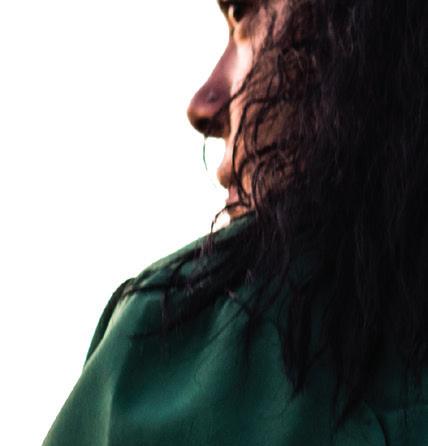

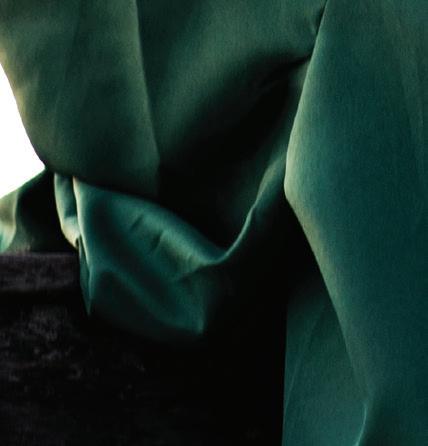
Student-run clubs could take your UFV experience to the next level
Tl’etl’axel: Student Orientation was a chance to explore campus and mingle with school communities
ALLANA QUIGLEY
On Sept. 5, the Tl’etl’axel: Student Orientation Day ONE took place on the Abbotsford campus Green from 11 a.m. - 4 p.m. New UFV students had the opportunity to tour the grounds and learn about different programs, clubs, and services provided at the university. To liven things up and create a welcoming atmosphere, the school provided music and games during the event, and arranged for food trucks to park on-site to feed the hungry crowds.
Tl’etl’axel was a chance for UFV’s various student organizations to set up tables outside and interact with new and returning students. The Cascade was on-site, stationed between CIVL Radio and the UFV Pride Collective.
One of the groups with a table at the event was the Wildlife Protection Club, which was
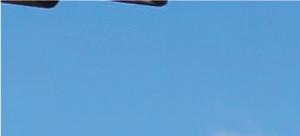


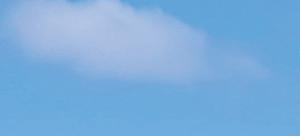
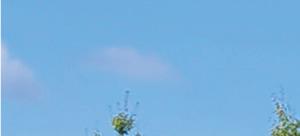
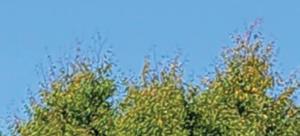
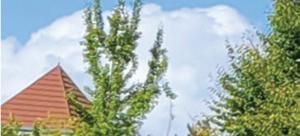




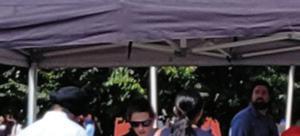

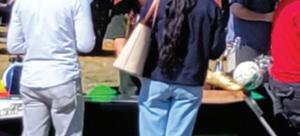

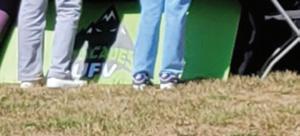




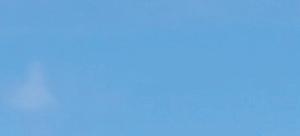



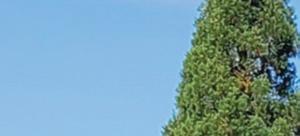


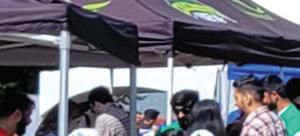

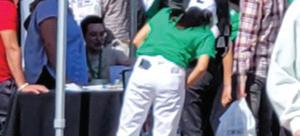

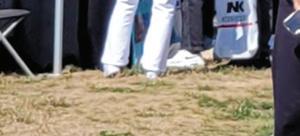
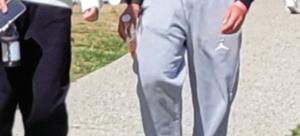
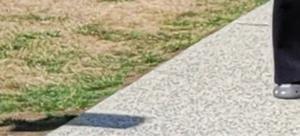
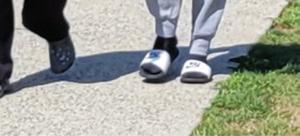

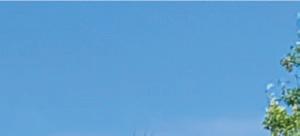



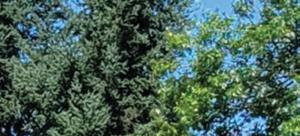


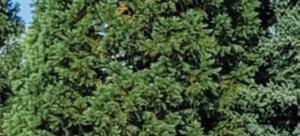




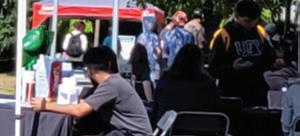
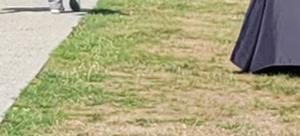
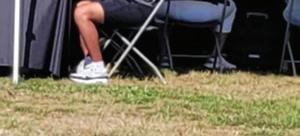
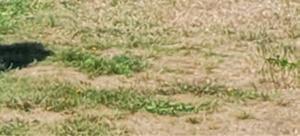
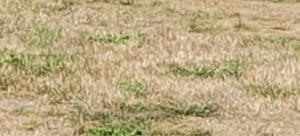


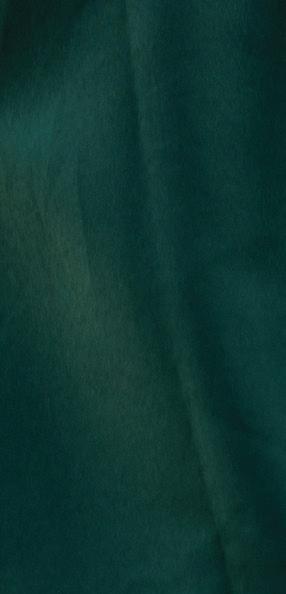
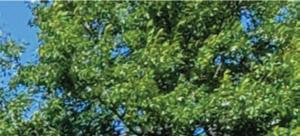

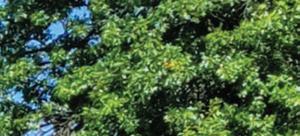

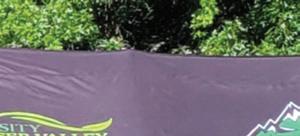
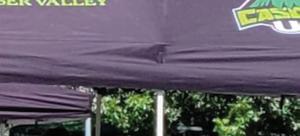
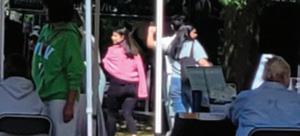
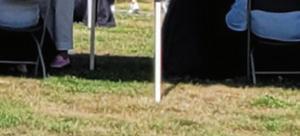

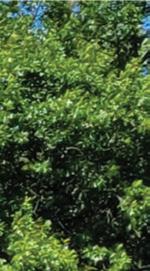


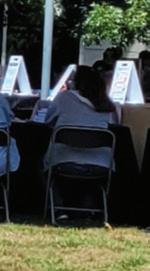
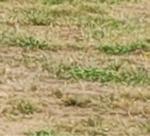
3 VOL. 31 // ISSUE 12 WEDNESDAY, OCTOBER 11, 2023 news@ufvcascade.ca News Editor — Rachel Tait NEWS UFV //
Photography by | Hunter, A. (2018) The Graduation | UFV (2023) city-studio, UFV. Abbotsford | Allana Quigley
UFV //
CONTINUED ON PAGE 4 …
restructured this year to offer more opportunities for students. “We can accommodate more people now that we're reorganized,” said Raj Gupta, a student member of the club. The Wildlife Protection Club gives students an opportunity to work together to practice sustainability in their own lives, as well as build connections to help promote conservation through club-organized events. Interested students can fi nd the Wildlife Protection Club on Instagram and Qpay.
The UFV Debate Club was also present. Debate gives students the opportunity
to hone their persuasive speaking skills, and to voice their opinions and arguments effectively. Those looking to build up their confidence would benefit from looking into the Debate Club. President Ella Duncan is leading the effort to bring her club back after a long hiatus. “It was a club that was here right before COVID-19,” said Duncan, “and then the pandemic kinda wiped it out, so we're trying to bring it back.” The club has two types of memberships: one for those looking to join the fray and get involved with the debate team, and
an option for people who just want to spectate and support the team.
For students who want an opportunity to get out on the water, the Rowing Club is another organization returning to pre-pandemic form. The club’s coach, Lisa Roman, has recently come back from winning a gold medal in rowing at the Tokyo 2020 Summer Olympics. “We are working on becoming a varsity team here,” said team member Rebecca Stokes. The team prefers real experience in the water, as opposed to training indoors on
B.C. fires, fires everywhere!
RACHEL TAIT
This fall, Central Okanagan Emergency Operations officially lifted Kelowna’s state of local emergency. Now that the ash has settled, it’s a good time to recap and reflect on B.C.’s perennial wildfi res, and their catastrophic effects. This past summer has held the highest record of wildfi res in the history of the province, and the devastation has resulted in multiple large-scale evacuations, and worsening air quality across the province.
According to the B.C. Government, “since April 1, 2023, 457 wildfi res have burned 869,861 hectares in British Columbia. The 20-year average for this time of year is 16,218 hectares.” For scale, that means a combined area 2,148 times larger than Stanley Park has gone up in flames in just the past six months.
The two main causes of wildfi res are human activity, and lightning strikes. Bruce Ralsto, B.C’s minister of forests explained that lightning is the main cause of fi res during the summer, whereas people are responsible for setting most fi res in the fall season.
According to CBC News, the B.C. Wildfi re Service explained that some of the ways fi res can be caused by people include “vehicle and engine use, industrial activities, fi reworks, sky-lanterns, outdoor flames, or discarding burning items such as cigarettes.”
The Donnie Creek Wildfi re, fi rst detected on May 12, was determined to have been caused by a lightning strike. It is recorded as the largest wildfi re in B.C. history. It destroyed 534,388 hectares of the province this summer, accounting for 62 percent of the total land area burned — an expanse 14 times larger than Abbotsford, which is “the largest municipality by area in the Lower Mainland.”
During the worst of the forest fi res, thousands of people were evacuated in cities such as Kelowna and Yellowknife.
Large-scale forest fires can become harder to bring under control. The B.C. government explained that one of the ways that it
can be better handled is by “focus[ing] on suppression activities around communities and critical infrastructure and monitoring the fi re where these values are not at risk.”
machines. “We try to avoid the machines as much as possible,” said Stokes. Rowing club members train in team configurations ranging from singles and doubles, to up to eight rowers at a time.
Ultimately, Tl’etl’axel demonstrated that there’s much more to the university experience than studying, and that no matter what your hobbies, interests, or passions, there’s a community for you at UFV. You can fi nd a list of student organizations to enrich your university experience at www.ufv.ca/ current-students/mycampuslife/fi nd-events/.

fi res of this size in the spring, and they are especially fi re-prone during the prolonged drought conditions we are currently experiencing, which contribute to advanced fuel drying.”
As of Oct. 4, there have been a reported 2,221 wildfi res across the province this year, with 333 still burning. Regional fi re restrictions persist, as infernos rage into the fall. CONTINUED FROM PAGE 3
Natural factors also contributed to the advanced growth of the wildfi res. According to a government report, “It is not uncommon for boreal forest types to experience
According to CBC News, environmental factors such as abnormally hot temperatures, lightning strikes, and recurring
drought all play a role in contributing to these historic forest fi res.
4 VOL. 31 // ISSUE 12 WEDNESDAY, OCTOBER 11, 2023 NEWS
by | Howard, M. Burning Fire
Photography
BC //
An overview of this summer’s horrific wildfires
Team coverage// An icy league of their own
Hockey’s female players finally take their well-deserved place in the world of professional sports
VERONICA POWELL
A new era of hockey arrives in January 2024, and fans are pumped and ready. News broke in late-August signaling the creation of the Professional Women’s Hockey League (PWHL), a new organization that would effectively dissolve previous attempts to launch women’s pro hockey in North America. The PWHL is gearing up to launch with six teams: Toronto, Ottawa, and Montreal in Canada, joined by New York, Boston, and Minneapolis-Saint Paul south of the border.
An agreement was reached between the Professional Women’s Hockey Players Association and the Premier Hockey Federation, which sold its assets in June as part of the agreement. The PWHL’s fi rst draft was held on Sept. 18. Three Canadians, Jocelyne Larocque, Ella Shelton, and Erin Ambrose were drafted in the fi rst round, with 49 Canadians selected overall. Thanks to an early collective-bargaining agreement, players on active rosters can expect to earn salaries in the range of US$35,000 to US$80,000.
The Canadian National Women's Hockey Teams have victories in the Olympics and world championships but are often considered “high-performance” teams rather than professional.
Senior vice president of the PWHL, Jayna Hefford, a retired ice hockey forward and Olympic gold medalist, expressed how important it is for a new league to rise, mostly for the up-and-coming women enter-

ing the sport. “The journey to get us here has been long, it’s been twisted, it’s been empowering,” said Hefford in an interview with NHL Tonight. “I’m not sure success comes in a straight line, so I think we’re all excited to move forward together.”
Brian Burke, executive director of the PWHL, recognizes the struggle that women

in hockey have experienced due to a lack of adequate resources. As well as being a former player, Burke has been general manager of the Vancouver Canucks and Toronto Maple Leafs, and knows how hard the players have worked to earn a spot on a new and improved, professional team. Stephanie Pascal, assistant coach for the
Sudbury Lady Wolves, is one of many who are happy to fi nally see change happen.
“For most girls in women’s hockey,” says Pascal in an interview with the CBC, “if you were not at the top like on the Olympic level, pretty much after postsecondary there weren’t a lot of options.” Now, female hockey players in Canada can envision a future in professional hockey, without having to look internationally.
In the same interview, former Olympic gold medallist Tessa Bonhomme imagined a world where the PWHL existed in her youth. "I would have been lacing up for a professional team, making a living wage and playing the game that I love,” she told the CBC. The creation of the league doesn’t just open up opportunities for players, but the entire apparatus required to support a professional league: from coaches, to the people selling hot dogs. It’s a system that requires a lot of thought, attention, and passion.
“It is like working so hard for something your entire life and fi nally watching it come to fruition,” said Bonhomme. “None of this feels rushed. It feels like everything’s done with the purpose and nothing is being done just to do it. There’s a plan in mind.”
Even though broadcast deals and ticket prices have yet to be determined, the PWHL says the fi rst game of the season will be available to stream. It will be a game-changing moment.
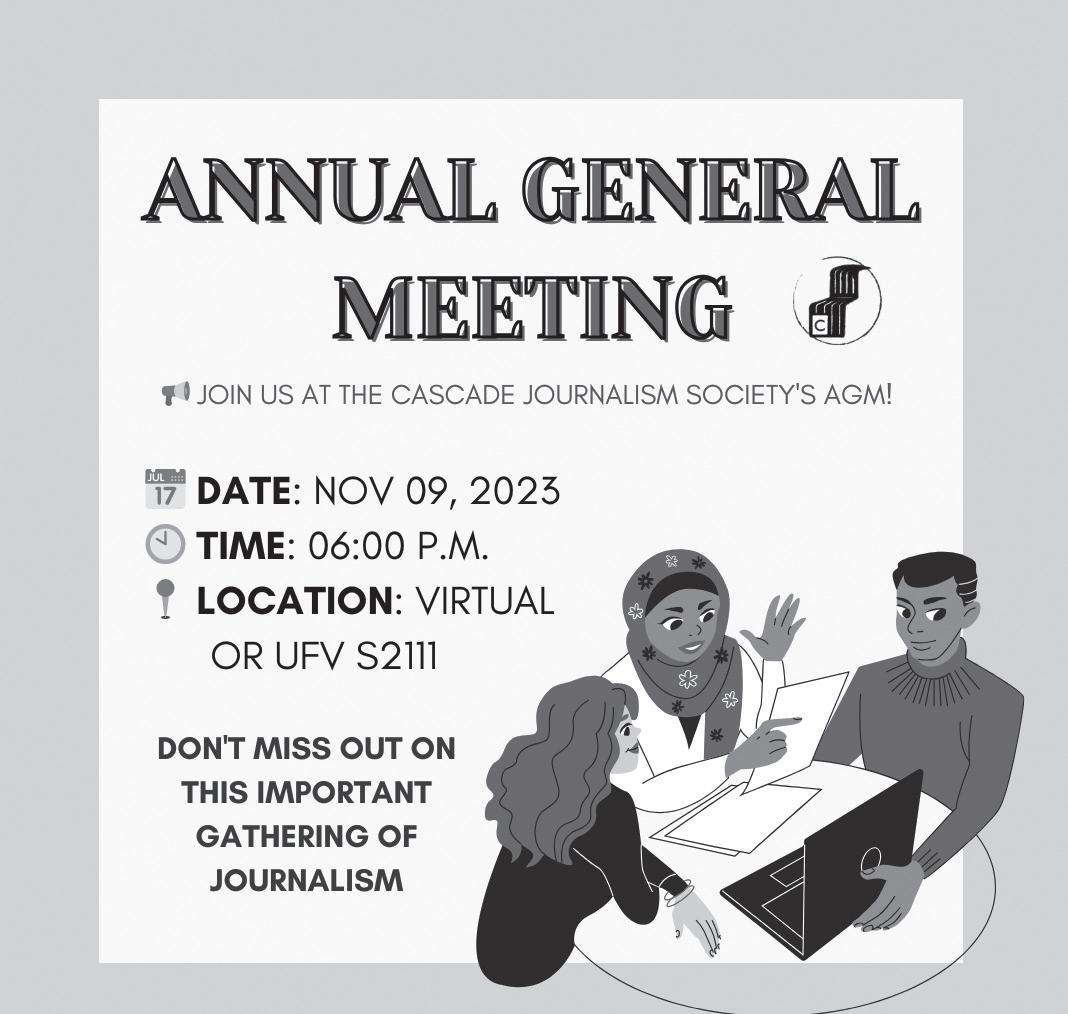
5 VOL. 31 // ISSUE 12 WEDNESDAY, OCTOBER 11, 2023 Photography by | Pajot, D. (2023) | Tampa Bay Times 2022 SPortsnet
sports@ufvcascade.ca Sports Editor - Teryn Midzain SPORTS
SNAPSHOTS
It’s an Inconvenient Truth, Charlie Brown
A little over a year ago, I wrote a snapshot. The thesis was this: hey, I know these paper straws are clearly the product of a heinous and uncaring God, but it's a sacrifice we all have to make to cut down on plastic. Well, I’m starting to feel a bit like Charlie Brown, laying in the grass, watching Lucy walk away with the football and wondering when I’ll learn my lesson.
It must have been around the same time that the very same food retailers who adopted paper straws, switched over to plastic cups. It’s not the fi rst time we’ve seen a bait and switch like this. Remember when Volkswagen was caught cheating on their emissions tests? Or what about the massive drive towards carbon-hungry reusable shopping bags — the ones we collect and forget in a cupboard at home. And then there’s Starbucks’ straw-less lid that contains more plastic than the old straw/lid combo and is all but certain to never be recycled. It’s not just corporations. Who buys fast

fashion’s disposable clothes, bottled-water by the case, and common goods from Amazon to save 20 cents? We do. We’re all Charlie Brown — and we’re all Lucy. Good grief.
BRADLEY DUNCAN

One of the craziest decisions I made this summer was made entirely on a whim. “Do you want to hike The Chief at night?” my friend asked. “Yes,” I responded.
Without giving it much more thought than that, my friends and I piled into my 2007 Saturn Ion and began our journey to Squamish at 9 p.m. Fueled by fried chicken and Red Bull, we arrived at our destination and illegally parked for the night. After praying to the Parking Gods that my car be spared from tickets, we took off.
We left the world of fast food and highways behind, and soon found ourselves in the pitch-
black woods. The night air was hot, and after two hours of endless stairs, my legs gave out. While we rested at a clearing, we discussed whether or not it was worth it to continue to the peak. All of a sudden, a shooting star fi red across the night sky. The awe-inspiring sight made the decision for us: “Fuck it, let’s keep going.”
As we reached the peak, we transcended our mortal form and became gods, albeit exhausted ones. We lay on the bare rock and watched the night sky until the sunrise set it ablaze. It was a truly sublime experience, marred only by one thought: I hope my car hasn’t been towed.
The Big Move
My sister is moving far, far away. Well, technically, I’m an only child, but I do have two people who I consider to be my sisters: Tay, who made me an aunt a couple years ago, and Amanda, the one moving far, far away. We don’t share a last name, and we didn’t share a womb, but I don’t think referring to them as my best friends would fully capture the essence of our bond.
The three of us are all 24 years old, all living with our partners. While Tay and I still live in our hometown, Amanda moved a couple of years ago, and the five minute drive to her house became 45. But now, after nearly two decades of friendship, The Big Move is upon us. Amanda is now a homeowner (in this economy?! I know). The catch is that this homeownership involves that 45-minute drive becoming a four-hour haul.
I am heartbroken, but also immensely proud; a complicated mix of emotions. Fiveyear-old me would’ve found it completely
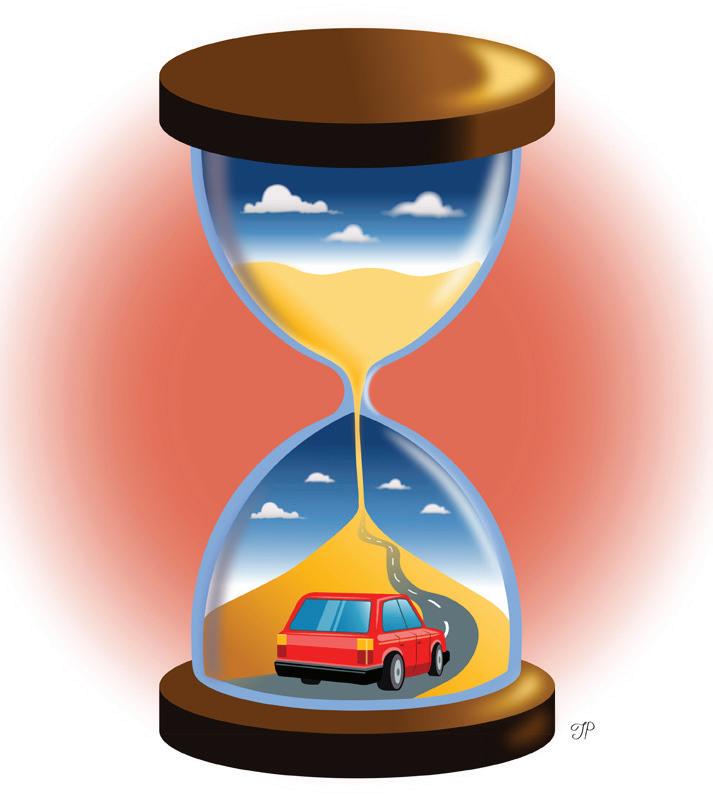

A Dicey Situation
I greatly enjoy dice — the polyhedral ones to be clear, although the six-sided ones have their charm. I have them in all sorts of colors. I have dice with inclusions inside, mass-produced sets, metal, and handmade ones in different sizes, obscure shapes, and for weird usages. I have dice that tell you what to have for dinner —vegan options included! I have some from Las Vegas; dice shaped like bottles, bullets, and arrows; one that takes the form of a padlock; and another cut like a gemstone. I even have thematic sets tied to archetypes of fantasy creatures
unacceptable to have to drive four hours to see Amanda. But I’ll be dishing out the gas money and packing up my car every chance I get. I love road trips, anyway. or species. Most standard sets of dice contain a D4, D6, D8, D10, D12, D20, and a percentile die. I have a D3: a die with three sides. They’re all organized by colour, collection, and obscurity. I even bought a bulk bag of defect dice from a small manufacturer at a low price. The imperfections are mostly aesthetic, like incorrectly layered colors or offcentred inclusions, but that just makes them interesting. Why did I buy them? Because I like ‘em.
6 VOL. 31 // ISSUE 12 WEDNESDAY, OCTOBER 11, 2023 Illustrations by | Iryna Presley
Night hiking is sublime (but not safe)
MATTHEW IDDON ALLANA QUIGLEY
AASHA KHOYRATTY
Advice // Somehow, cars are even worse than we thought
Roadways, and the motorists who use them, are driving entire species into oblivion
BRADLEY DUNCAN

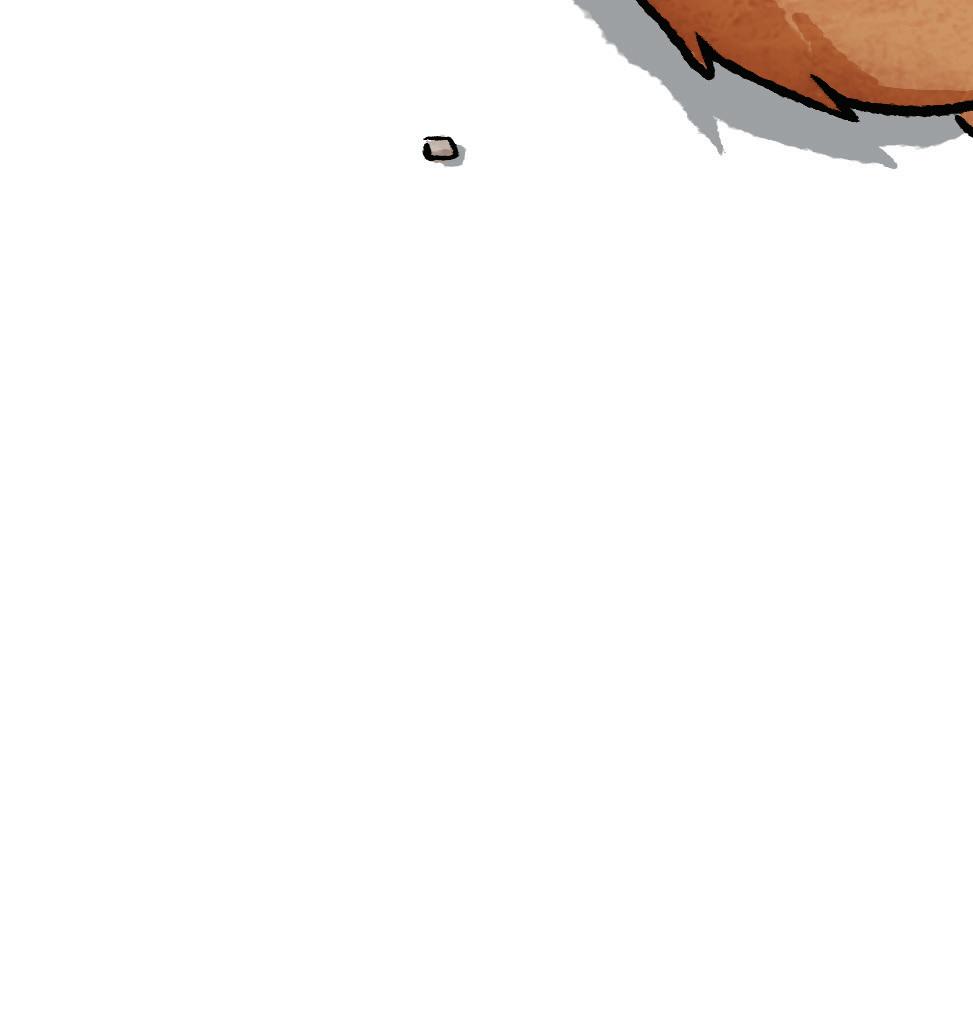
The typical commute from my home in Maple Ridge to the Abbotsford campus is roughly 40 km, the majority of which runs along B.C. highways 7 and 11. It’s usually an uneventful drive without that much to see, but occasionally I’ll spot something on the roadside that creates a small pit in my stomach where it resides until the object comes into focus. It’s often some random debris — shreds of tire or fragment of tree — but there are times when it’s tragically not.
“Roadkill” is the term used to describe the animals who sadly don’t get to see for themselves what that determined chicken was after. As difficult as it can be to witness, the sight of deceased animals on the roadside is often rare, which undersells just how big a problem roads (and the cars that navigate them) are for wildlife. Human thoroughfares often interrupt natural migratory routes, criss-cross feeding grounds, and bisect territories. When animals refuse to engage in a life-and-death game of Frogger, these structures can be impassable barriers locking them into ever-shrinking habitats. Increasingly, more than poaching, deforestation, or pollution, cars are being fi ngered as a primary culprit in global biodiversity decline.
While we can’t solve an ecological crisis that’s being referred to as the sixth mass-

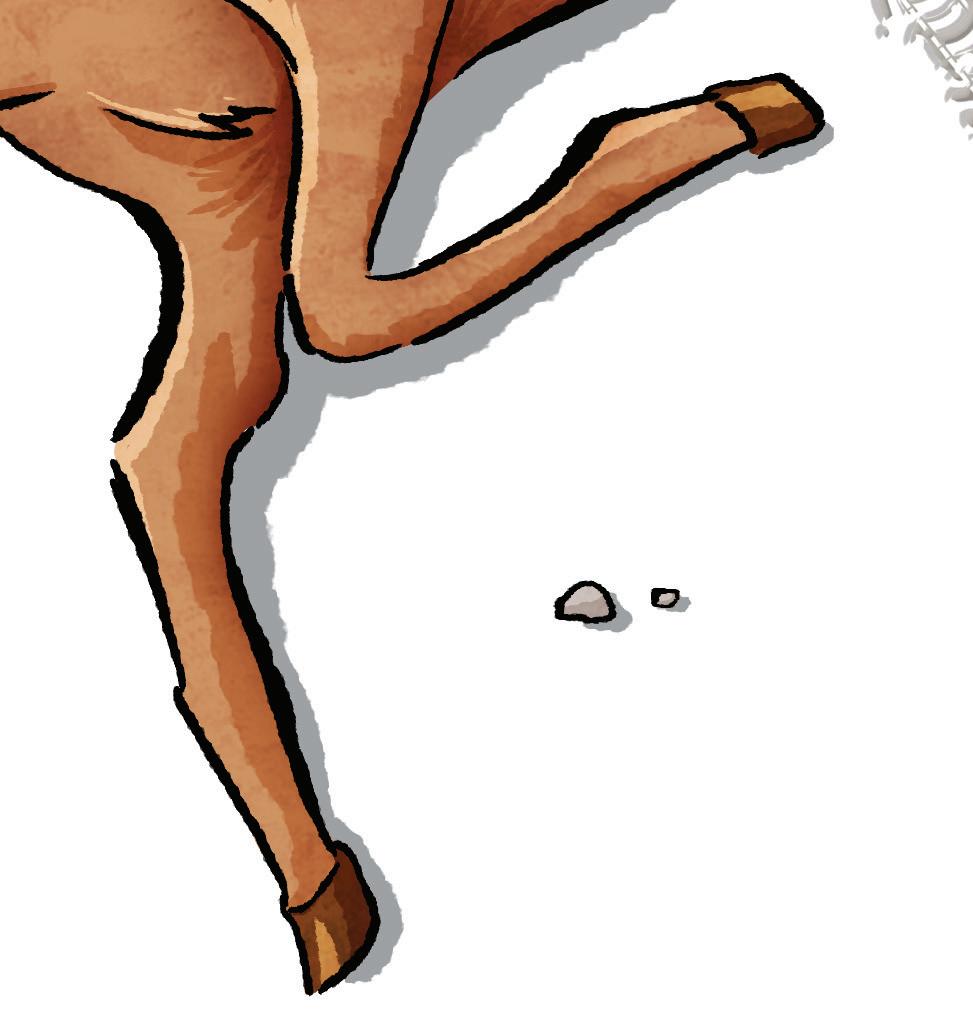
extinction event in our Earth’s history, we can certainly do more to protect the wildlife within our own significant borders — and the template is in Banff.
Banff National Park is home to 44 “wildlife crossing structures” consisting of six overpasses, 38 underpasses, and 82 km of highway fencing. The ambitious project began in 1981 when increased traffic in the region called for twinning that section of the Trans-Canada Highway. Completed in 2014, the ambitious network of natural crossings has become the largest in the world, and is one of the nation’s greatest conservation success stories.
Banff has even become a blueprint for others. As the developing world continues to modernize, and roadways — often arteries of economic growth — expand into natural habitats, motorists are increasingly colliding with wildlife. Brazil’s BR-262, a massive highway that cuts through two of Brazil’s most important ecosystems, is one of the world’s deadliest for wildlife, contributing to the deaths of over a million vertebrate animals in the country — daily. What good is protecting the rainforest if we’ve eradicated all the animals who called it home? And yet it seems that we’ve lost the forest for the trees. Why?
There are things that make humans
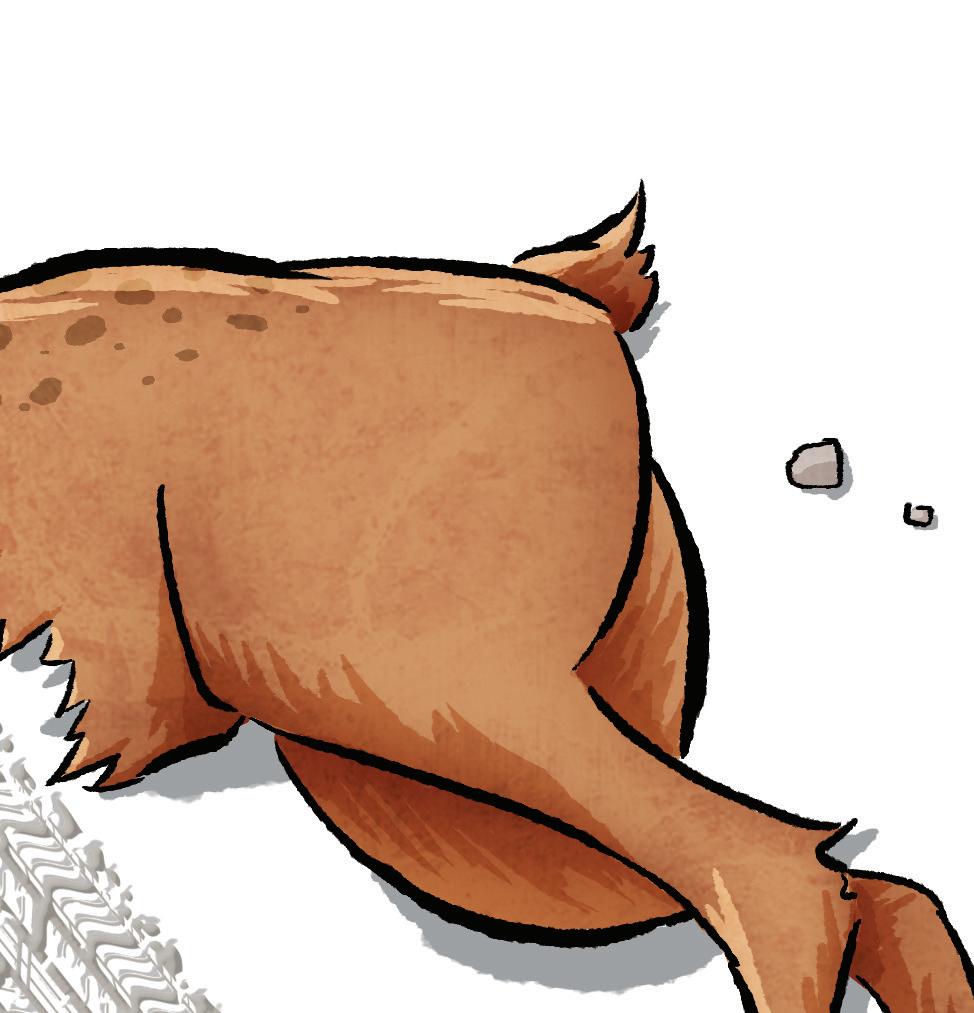

wonderful creatures, but we’re bad with scale. The suffering of an individual will move us to action more readily than two, and much more than a thousand. It’s a phenomenon known as compassion fade — a term coined by the psychologist Paul Slovic that’s far too complex to explore here — but we best empathize with other individuals. Our ability to care begins to break down when the numbers become abstract. For example: In Newfoundland and Labrador alone, 700 vehicular collisions with moose are reported each year; ICBC records about 1,100 annual animal collisions in the province, whereas one million animals are killed annually on roads in the Greater Toronto Area; drivers in Australia (a country with a population of approximately 26 million people) hit 10 million animals yearly; across North America, up to 340 million birds are hit by cars every year; an estimated 2 billion animals are lost every year to cars. The numbers are so staggering we begin to lose all connection to them.
Consider instead the words of environmental journalist Ben Goldfarb, reporting on roadkill deaths in Brazil: “The victim, six feet from her long snout to her massive tail, lay sprawled on the shoulder in a state of advanced decomposition… I ogled the long broom of a tail, the appendage that this

anteater had once wrapped around herself and her pup like a blanket against the chilly Cerrado nights. Now it was limp.”
As a society, we need to not let our empathy for the individual decay into apathy simply because the scale of the problem appears so daunting. Every one of these roads were built with human hands, money, and machines. Would I like to fundamentally redesign our cities and alter our relationship to cars? Absolutely — but in the meantime, building natural corridors is something we can and should do. Once we become aware of the sheer scale of our destruction, it becomes a moral fucking imperative.
This is one of those rare, solvable problems. We are in the midst of a global mass die-off, but we can protect the biodiversity inside our borders. Since Banff constructed its network of wildlife crossings, collisions with animals have decreased by “more than 80 per cent and, for elk and deer alone by more than 96 per cent,” according to Parks Canada.
We can find the money. We’ve incinerated more taxpayer dollars over less — and when you fi nd an issue that hunters and vegans can unite behind — you just can’t put a price on that.
7 VOL. 31 // ISSUE 12 WEDNESDAY, OCTOBER 11, 2023 Illustration by | Gaurav Gomes
opinion@ufvcascade.ca Opinion Editor
OPINION
HUMANITY’S RELATIONSHIP WITH THE PLANET IS CHANGING. IF WE WANT TO AVOID THE FATE OF OUR RIVALS, WE MIGHT HAVE TO CHANGE BACK.
BRADLEY DUNCAN

A Trip Through Time The Sublime Environment
She wipes the grime off her forehead with the back of her hand. When she'd entered the chamber it was cool — slightly cooler than the crisp summer air beyond the narrow corridor — but now it was stifling in the dim, hollow space. She peers through the torchlight; her breathing is heavy. She’s been awake for days, and though exhausted, her body feels light and buzzing like an insect. She imagines she can fly, if only she had wings to carry her off.
One of the elders holds a bundle of dried plants to the solitary flame in the center of the wide, squat chamber. It’s difficult to make out the figure, adorned in ceremonial dress that obscures her features, and the air is thick with sweat, smoke, and shadow. The herb bundle produces a fragrant, cleansing aroma, a sign that the ritual is complete. How well she performed was still in question, but she followed the rites exactly, and her long vigil has come to an end.
Another figure approaches with an offering of water. She gingerly lowers herself onto a deer-skin that has been laid out on the cold earth, and crosses her legs before gratefully accepting. She recognizes her sister by her stature, for she is younger and much shorter than the others, apart from her grandmother who is too
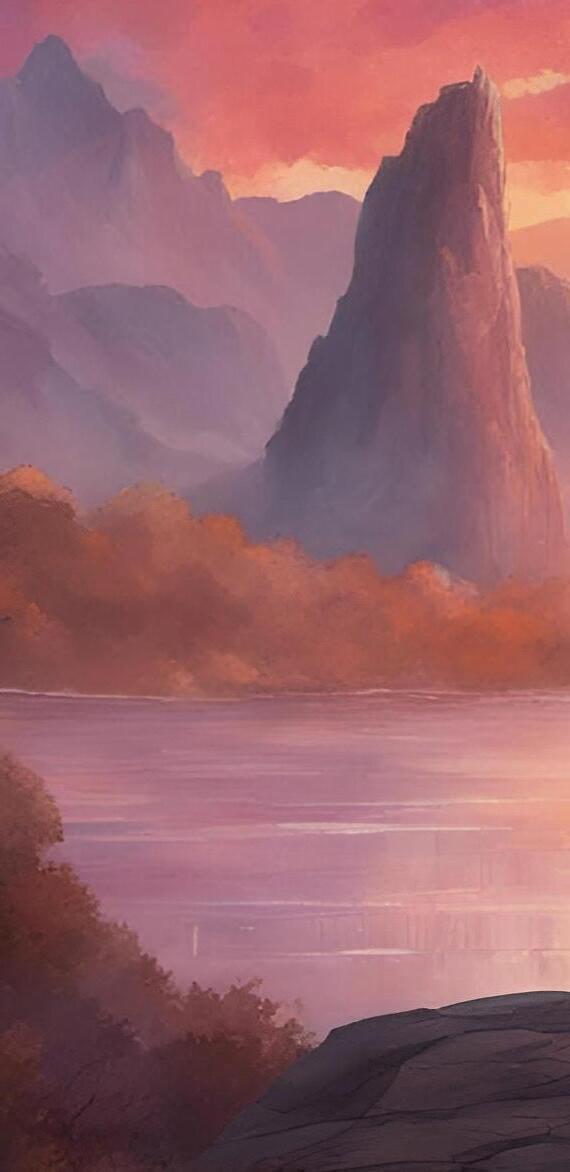
old for the ritual now. Those not directly involved, such as her mate and their children, are waiting outside, guarding this sacred place. The water runs down her throat like the first seasonal rains into a dry creek bed. It feels like renewal, and she tips her head back, water overflowing her lips and running in muddy streaks down her dusty chin and onto her exposed body. She is the only one nude, for there can be nothing obscuring the bond between her and her ancestors.
Her eyes scan the curved walls and domed ceiling of the dark chamber. She’s been here many times before — participated in the ritual many times before — but never like this. The familiar recesses in the walls appear to have taken on an unfamiliar quality and she finds it disquieting that she had never seen it this way before. Her gaze lingers on one of the alcoves, and on the skull placed gently within it. Then, her eyes drift to the recess above it, which sits empty. A spot reserved for her, someday. It should have been her brother, but he tragically died in the winter chill before he could retrieve the bones of their father from the resting grounds to transport them here to rejoin the clan. It was then
VOL. 31 // ISSUE 12 WEDNESDAY, OCTOBER 11, 2023 8
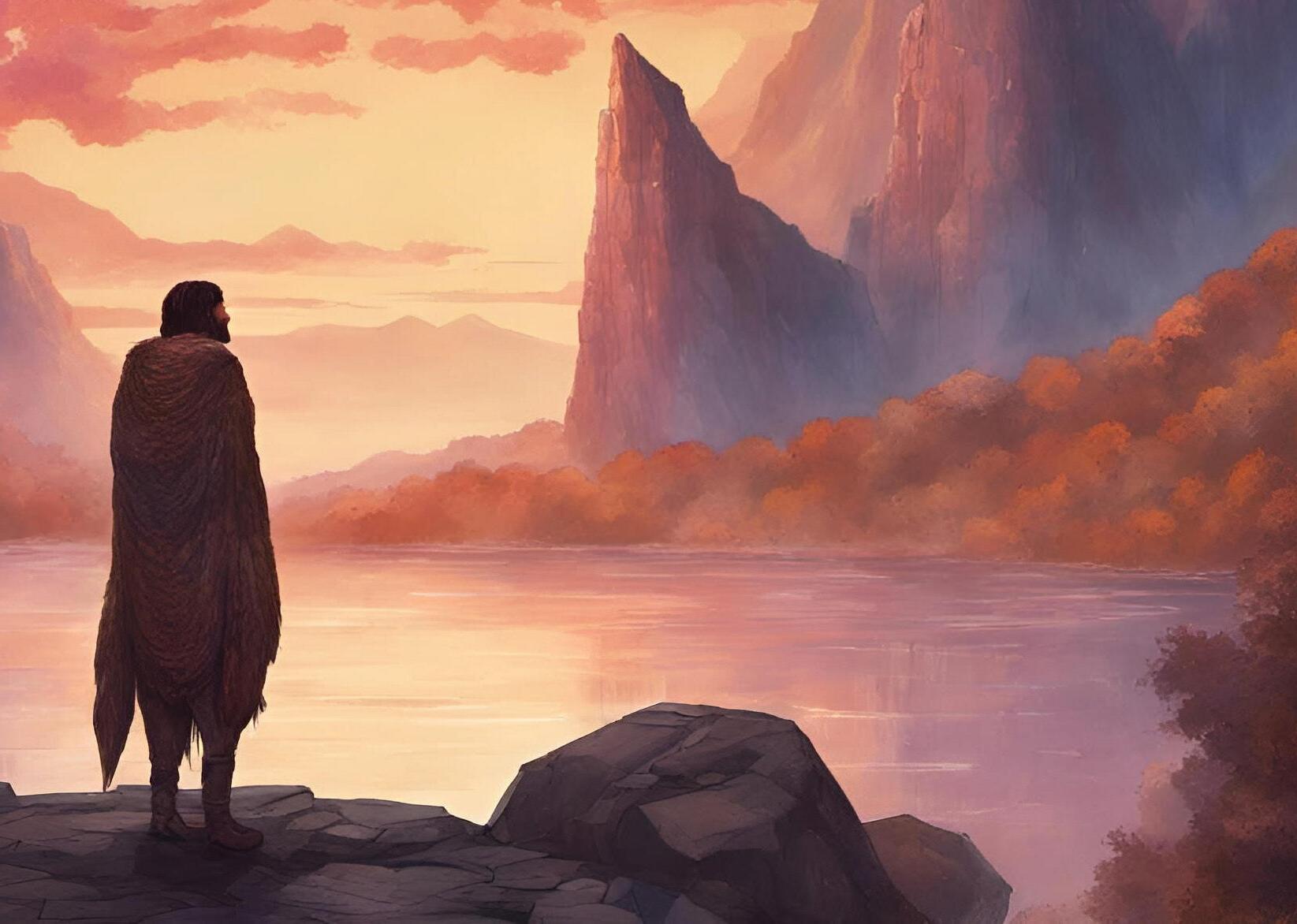
that the responsibility passed to her. Only those who complete the ritual, as she just had, can find their way back here after death. Many generations now lined the sacred walls of this place, protecting the great line’s future. The rest of her people, once returned to the earth, may watch and guide, but can do little more. She can feel them watching now.
She hears a call from outside, and the sound echoes and pulses around the smooth, pocketed walls. It’s time. She rises to her feet and makes her way to the narrow tunnel that serves as the entrance to the chamber. She’s an imposing figure, and has to make herself small to navigate the passage. She can see the sky beyond the aperture of the cavern. It’s a deep, ocean blue. She brushes her hands against the rocky pillars that support a massive capstone which marks and guards the entrance. Ducking under the stoney roof, she emerges, and her mate drapes a skin around her shoulders. She is still damp with sweat, and her skin contracts in goosebumps against the chill. He brushes a few strands of hair from her face and tucks them behind her ear before gesturing for her to turn around.
The highground of their summer encampment gradually slopes down, running into the shoreline of a narrow inlet where the family has fished since the last of the ices melted from this place long before she was born. Beyond the waters, past the far shore, two large mountains rise up, piercing the sky with white-capped peaks and sheer rocky cliffs. She watches the snowcaps shift to a pale pink. This is the moment of truth.
She sits with her back against an elm tree, warm in her furs, belly full of smoked meat and berries. The sky is streaked with high wisps of mist streaked with fire and fringed with gold. A low puff of cloud rings the tallest mountain peak, which pierces the haze to meet the luminous heavens. The sea, calm and placid, glimmers in the dawn like earthen starlight. On this day — the longest of the year — she has completed a once-in-a-lifetime ritual, and she has performed it well. Her ancestors have deemed it so. Secure in this, she lets her weariness take her, and falls asleep, dozing in the shade of eternity.
VOL. 31 // ISSUE 12 WEDNESDAY, OCTOBER 11, 2023 9
by | Bradley Duncan/Stable AI
Illustration
The Problem of Imagination
As much as we might like to tell ourselves otherwise, human beings are not separate from nature. Yes, we have come to construct our habitats rather than bivouacking in caves, but so do beavers and bees, and we don’t see them as apart from the natural world. Indeed, the worlds we create are often ideal for other species. Raccoons, foxes, rats, birds, and insects often thrive in urban environments where food is abundant and apex predators are few. These animals are typically regarded as pests precisely because they’ve adapted so well to what is supposed to be our world. Who the hell do they think they are, after all?
The human impulse to create a barrier between ourselves and an often unforgiving environment is understandable. We lack strong defenses like thick hides, or sharp talons to ward off predators. To venture into the wild places of the world can mean encountering Tennyson’s “nature, red in tooth and claw.” It can be frightening, and anxiety-producing. When we hear that large predators have wandered too far into human spaces, we often take action to remove them — in one way or another. Even if we venture into their habitats, like the ocean, and tragically become prey, we react as if the animals have declared war. In Sydney, a fatal, unprovoked shark attack (their first since 1963) led to calls for a culling.
We drive species into extinction all the time. Often we don’t even realize we’ve done it until it’s too late — but other times, we’re all too aware — as the novelty of a species’ fleeting existence increases its market value. We wipe our species because we’re careless, like introducing pigs or rats to remote islands. (If you want to have your heart broken, listen to John Green talk about the Kauaʻi ʻōʻō on his podcast, The Anthropocene Reviewed.) Sometimes we wipe out whole ecosystems for farmland or plantations, or pave a road through their home and remove the critters one at a time with our Michellins and our Jeeps. We see the devastation, but then swipe to the next video — a skater crushing his nuts on a rail — and the world is put right again.
"WE SEE THE DEVASTATION, BUT THEN SWIPE TO THE NEXT VIDEO — A SKATER CRUSHING HIS NUTS ON A RAIL — AND THE WORLD IS PUT RIGHT AGAIN."
The disconnect is that while our evolutionary biology tells us to fear the bat that swoops too close to our head, our technology has radically changed our relationship to the rest of nature. The saying, “it’s more afraid of you than you are of it,” has never been more rational. We have provided animals with many good reasons to fear us. Sure, we kill to sustain ourselves, as many animals do, but we also kill out of malice, greed, boredom, or simple disregard.
Even though our primitive need for abundance and security is well understood, and despite the obvious destruction we leave in our collective wake, we can’t seem to shake ourselves from the patterns that pervert our ability to live in concert with the rest of the world’s inhabitants. We’re like a good friend who doles out the very best advice, and yet applies none of it to our own lives. Whether it’s carbon in the atmosphere, poison in the water, or desolation on the land, we look at the rest of the world and wag our finger, and then use that same appendage to order a shirt that will ultimately find its way to a Guatemalan river; or we unnecessarily upgrade our cell phone with a lithium battery mined from the Congo rainforest, to repost an Orangutan fighting off a digger “destroying its jungle home” in Borneo. A sight like that is enough to make you side with Thanos.
We do know better. We’re not an inherently evil species. So why, with all our wisdom and knowledge, can we not escape the pull of primal impulses that create so much collateral damage? Is the answer to be found in more data, logic, and rationality? Maybe it’s to be found in the recesses of our past — in another persistent and universal instinct.
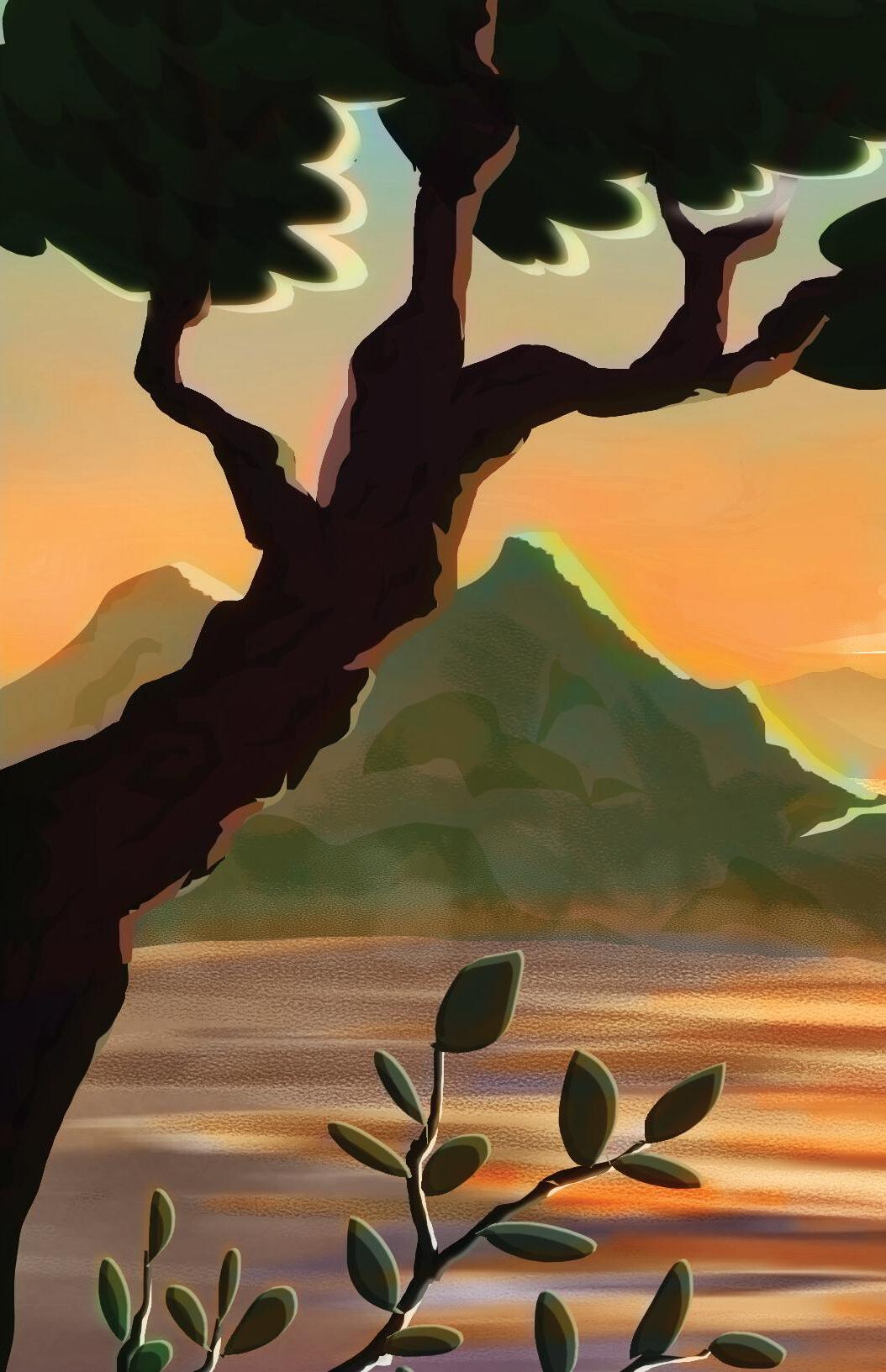
VOL. 31 // ISSUE 12 WEDNESDAY, OCTOBER 11, 2023 10
My dog, the dreamer
My dog, much like his owner, has an affinity for sunsets. Every evening, whether the skies are brilliant hues or shrouded in brooding clouds, he perches atop our sofa and surveys his street. From this vantage point, he silently bids farewell to the neighborhood.
As the sun sets on the town below, my furry friend becomes a solitary philosopher, lost in his own musings. He watches the world transform from day to night, a ritual as reliable as the moonrise. I cherish these moments, observing him in his sunset reverie. Sometimes, he turns to me, as if to say, You see this, right? It's a nonverbal acknowledgment — a shared sentiment between two beings with a history that spans millennia.
In the grand tapestry of human evolution, there exists a span of time when our distant forebears made the profound leap from instinctual beings, concerned solely with the immediacy of food, shelter, and survival, to creatures capable of contemplating the future. It's a mystery that unfurled over millions of years — a transformation that reshaped our perceptions and redefined our very nature.
We, the descendants of those early visionaries, once gazed through tall grasses and dense forests, always on the lookout for what lay around the next obstacle. But as landscapes shifted, we adapted. To survive, we had to see danger before it arrived, and so, we stood upright and set our sights on the horizon. We became tall to gaze into the distance, beyond the veil of the immediate.
Our ancestors began to imagine the bounty and peril that could await them over each new horizon.
The prospect of a grove of trees brimming with fruit, the presence of a herd, or the lurking shadow of a predator — all these uncertainties required foresight, predictions, and strategic planning. We learned to thrive by forming communities, relying on numbers, and devising ways to organize our societies. Was it the relentless pursuit of the future — the eternal fixation on the next frontier — that laid the foundation for the consciousness we hold today?
As I sit here, sharing this moment with my dog, absorbing the beauty of the skyline together, I'm reminded of the enduring bond we share — that our species share. He, too, looks out to the future, acknowledging the close of another day. Dusk fallen, he crawls closer, patiently awaiting an invitation to nestle in my lap. It's a legacy, a connection that stretches back over 30,000 years — a testament to the intertwined destinies of two species that recognized the potential of linking their fates together.
Illustration by | Gaurav Gomes
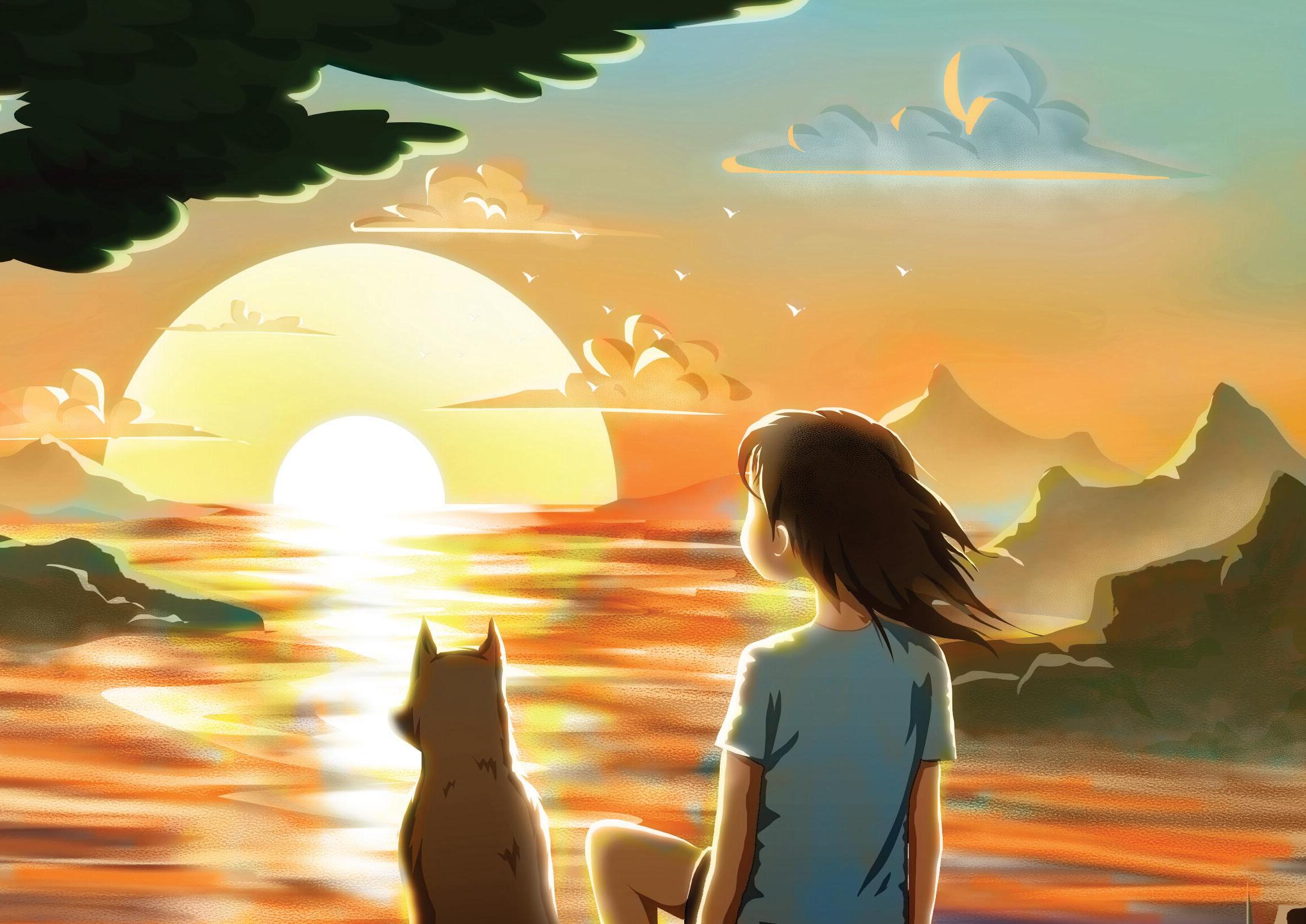
VOL. 31 // ISSUE 12 WEDNESDAY, OCTOBER 11, 2023 11
A bit about
Megalith is not a common term, but after explaining that it simply translates to large rock, and refers to human-made stone structures, the first image that pops into people’s mind is usually Stonehenge in England, or perhaps the infamous Moai of Easter Island. Truly, those are fantastic examples of megalithic structures, but megaliths pop up all over the globe and date from the prehistoric to the present day. Apparently there is something in the human condition that tells us we can wrest a sliver of immortality from the earth to mark our brief existence on it.
Megaliths often correlate with loosely agricultural societies — people who are cultivating crops and domesticating animals, but haven’t fully stratified into specialized groups of warriors, builders, and artisans — but even this is difficult to ascertain. Megaliths, like the societies who erect them, come in many variations. They also serve a variety of functions. Some mark tombs, while others serve as meeting places. They are meant to be a mark upon the landscape, so indelible that they become the landscape. The stones can be transported for hundreds of miles, or used where they are found, as with glacial erratics, carried from afar and deposited after the ice recedes. Many of the deeply personal meanings of these sites have been lost to time, their messages buried with their builders and caretakers, save one: we were here.
The dates and arrangements of megaliths tells us a little about their purposes. Some appear to come at the end of a sustained period of inhabitation, turning the location into, in the words of Julian Thomas, professor of archaeology at the University of Manchester, “places of memory.” Thomas discusses the mysterious meanings of megaliths on the BBC Radio podcast, In Our Time. He explains that while some megaliths are in “conspicuous” locations, like prominent hillsides or along “natural routeways” to ensure that they will be seen, others turn things around to have “commanding views” — of coastlines, cliffs, rivers, or mountains.
In the same conversation, Susan Greaney, lecturer in archaeology at the University of Exeter, mentions that scholars are taking a closer look at how these structures are situated within the landscape. “We get monuments,” says Greaney, “where particular clefts in mountain ranges nearby, or particular viewpoints of distinctive hilltops are deliberately showcased from the monuments in relation to the movement of the sun.” It’s not a stretch to think that some of these sites were places of ritual, connection, and spirituality. Religious traditions in cultures without the written word often draw heavily from the environment and the natural world.
“It's very likely that you don't have an idea of different realms,” says Thomas, “like heaven or hell or an underworld. Instead, I think it's likely that spirits, deities, [and] ancestors are understood as being imminent in the landscape. When people are actually constructing these monuments and reorganizing the landscape, it's as if they're engineering the cosmology.” Thomas thinks that these sites could be places of profound meaning, especially those with hidden chambers. “Being inside these monuments is going to be quite an experience.”
Researchers have studied the acoustics of prehistoric chambers around the world, and found a recurring characteristic: they resonate with particular frequencies that induce physical and cognitive effects on the human brain. Specifically, deep male voices attuned to 70Hz and 114Hz echo and compound in the “super-acoustic” rooms. During experiments, volunteers exposed to these frequencies tend to experience altered states of consciousness, signaling that these could have been transcendent events. “You're entering into a dark space covered over,” says Thomas. “You crawl down a low passage or crouch, and then you open out into a big open area where you're encountering the remains of the dead. All of this I think is going to be an almost overwhelming experience.” Some might call it Sublime.

VOL. 31 // ISSUE 12 WEDNESDAY, OCTOBER 11, 2023 12
Photo by Thomas Griggs on Unsplash
Encounters with the
“I laid on a log in front of my camp for the night and cried, watching the sunset,” wrote Katie Purdey, recounting in an email her recent solo trip to Juan de Fuca Provincial Park. “The tears came from a deep sense of relief and realization that life could be more simple than I was making it out to be.”
Curious about the deep-seated connections between human beings and our environment, I asked Purdey, a UFV alumna, what drives her to regularly get out into nature, and just what it is she gains from the experience. She replied that getting off the grid acts as a “form of release. It’s a way to off-load the external pressures of dayto-day life, and to sort through the noise in my mind.” As a coach with a bachelor's degree in kinesiology, Purdey understands the importance of health — body, mind, and soul. “When I decide to go out for a hike, run, or adventure of any kind, I make a commitment to set aside that time to be present with myself and my surroundings. It’s a way of slowing down, and a way of coming back to a more centered way of living.” But it wasn’t always this way.
“My relationship to the environment has changed substantially over the years,” says Purdey. “As I spend more time exploring the outdoors, I’ve developed a greater appreciation for the natural beauty it holds and make stronger efforts to support the well-being and integrity of the habitats around me.” It’s far from a universal ethic. Nature and wilderness tend to evoke contrasting emotions — a dichotomy embodied in the depiction of “the woods” in the stories we tell. Forests serve as the setting for many of our fairy tales, and embody the mysterious and unknown. They often conceal threats which appear in animal, human, or supernatural varieties. However, they also shelter oases: picturesque cabins, sunny glades, and benevolent creatures who can provide care, respite, and aid to lost travelers. For as long as we have been constructing
barriers between human societies and the wilds, we have been longing to reinforce that ailing connection.
In the early 1980’s, in response to widespread burnout and stress-related illness, the practice of shinrin-yoku emerged in Japan. Translated as “forest bathing” or “taking in the forest atmosphere,” the objective was to immerse yourself in nature, allowing your senses to fully absorb your surroundings, and reconnect with the environment. Unlike a hike or nature walk, forest bathing is about slowing down and realigning with a more natural pace, and contains many of the same elements as meditation and mindfulness. The benefits aren’t just anecdotal. A 2019 study found that “Forest bathing activities may significantly improve people’s physical and psychological health.” Amazingly, the researchers found that the practice demonstrated an ability to “regulate blood pressure, reduce blood glucose, regulate endocrine activity, relieve mental disorders, fight cancer, boost immunity, and treat respiratory diseases.”
The benefits from sojourns into nature aren’t limited to those that arise from tranquil relaxation. According to a 2018 study, researchers found that feelings of awe correlate with increased feelings of humility — a core virtue that works against narcissism, arrogance, and egoism. When we face the truly awesome: something that instills wonder, reverence, and terror in our hearts, our daily irritations and paltry ambitions lose their standing.
"FOR AS LONG AS WE HAVE BEEN CONSTRUCTING BARRIERS BETWEEN HUMAN SOCIETIES AND THE WILDS, WE HAVE BEEN LONGING TO REINFORCE THAT AILING CONNECTION."
Both light and dark natures exist in the obscured hearts of the woods — as they do in people — which makes them a metaphor for our own inner natures. For wayfarers like Purdey, the experiences can be profound. “I’ve also had emotional reactions to certain animals crossing my path… they felt welcoming… as if they were sent as a sign.” She doesn’t always know what it’s supposed to mean, but that “it comes again, as a release. An unwavering sense of, ‘I am right where I need to be, and everything is going to be okay’.” In an increasingly urbanized world, many are finding the source of rejuvenation in our everdwindling wild places. It’s far from the first time.

VOL. 31 // ISSUE 12 WEDNESDAY, OCTOBER 11, 2023 13
Capturing the Sublime
“The passion caused by the great and sublime in nature, when those causes operate most powerfully, is astonishment: and astonishment is that state of the soul in which all its motions are suspended, with some degree of horror.” — Edmund Burke
Whenever I get too close to the Stawamus Chief, a cold chill runs down my spine and I feel a creeping onset of unease. However, unlike those who summit it, where a healthy level of fear is warranted, my dread comes at the base of the mountain. It’s an odd feeling. As the sheer cliffside takes up more and more of my field of vision, my apprehension mounts. Sometimes I even need to steady myself when I crane my neck to take it all in. I know I’m in no danger, and yet my is
This is the experience referred to as The Sublime.
“For Burke, it's about a kind of aesthetic, or a psychological experience,” says Dr. Heather McAlpine, UFV’s English Department Head. “Prior to Burke, it was coined by Longinus or Pseudo-Longinus who was a kind of rhetorical authority in the classical period, and in that period of time, Sublime is used to talk about oratory — using language or using delivery that will uplift the listener … It's a rhetorical term at the beginning, and then when Burke gets a hold of it, he kind of changes it a little bit around.”
I wanted to ask Dr. McAlpine, an associate professor of English with a keen interest in Romantic literature, to help me better understand the way that the human relationship with nature was changing in The Romantic Period. “The Sublime bridges the gap between the earlier 18th century enlightenment rationality and the Romantic period. We see The Sublime emerge at a time when the focus on rationality and science was kind of wearing thin on people. They were thinking, Okay, science is great and everything, but is it helping us live better lives? Is it helping us understand love or sociability?” At a time of increasing urbanization — in the heart of England’s Industrial Revolution — many began to regard the natural landscapes differently.
Increasingly, the wilds were seen and portrayed as sources of spiritual renewal and purity — a way of nourishing the soul. Mountain spires, roiling seas, and cascading waterfalls became powerful symbols, embodying a quasi divinity of their own. In the words of Dr. Kristian Urstad
on the podcast, The Wisdom Of, the subjective feeling we encounter is due to the perceived contrast between “these natural enormities, and how small and mortal it is that we are in comparison… The Sublime is the experience of natural beauty that makes us fear for our security and our existence. It’s the experience of a natural beauty so majestic that it invokes the perilous.”
“The Romantics were all about recording the movement of their own mind in these moments of experience,” says McAlpine, who devotes much of her scholarly work to how poetry in particular grapples with the task of expressing transcendent experiences. She notes that Burke in particular seems to be encouraging people to try to have these experiences; to test it for themselves. In that, Burke sounds like a psychonaut: someone exploring altered states of consciousness, aware of the limitations of language and art to convey the truly ineffable, and encouraging a more personal exploration.
And explore, they did. Writers and artists trekked through the countryside in search of earthly inspiration, attempting to communicate to their audiences the upwelling of emotion they felt. Culturally, it altered the relationship with the land, and the objects they found there, as seen in a 2013 study. In the words of the study’s author, Kate Mees, the thousands of megalithic structures dotting the British Isles came to represent an important link to the past, “provok[ing] contemplation and serv[ing] as memento mori” (a reminder of death’s inevitability). Mees contends that this “reevaluation of prehistoric monuments” was associated with Romanticism, was “indebted to the taste for the picturesque and the sublime,” and “offered a sensory point of reference to the past.”
This new depiction even stimulated tourism. Ancient stone structures became “part of planned walks in order to encourage the contemplation of past civilizations (…) Ruins could raise the imagination and their presence could stand for a number of values, as reminders of the power of time and the ultimate fragility of human endeavour.” Much as the Romantic poets and painters were trying to replicate the sublime through their works, British estate owners in the 18th century began incorporating “prehistoric remains, either genuine or artificial,” into their designs. But the sublime is just a word, imperfect as it is, for the subjective experience we feel in the presence of something that forces us to face our diminutive existence. Can that truly be captured and conveyed, or is something fundamental being lost in translation?

VOL. 31 // ISSUE 12 WEDNESDAY, OCTOBER 11, 2023 14
Conserving only the beauty
In 1851, when the world was still heavily reliant on whale oil for illumination and machinery lubricant, Hermann Melville published Moby Dick. The tale follows the exploits of the crew of the Pequod, a whaling vessel captained by the single-minded Captain Ahab in his dogged pursuit of the great white whale who took his leg. Moby Dick, a massive sperm whale, is a symbol of the sublime for both the reader, and for some of the ship’s crew. He’s depicted almost like a demigod: a whale greater and more terrible than all others, and the ruination of the ship’s crew comes from attempting to capture and kill something genuinely awe-inspiring.
Ishmael, the story’s narrator, tries and struggles in vain to express what it means to be in the presence of Moby Dick, but ties himself in knots, wrestling with the whale's vast whiteness — a quality that “appeals with such power to the soul” but that he can’t quite pin down. Moby Dick represents to Ishmael a kind of infinity that “shadows forth the heartless voids and immensities of the universe, and thus stabs us from behind with the thought of annihilation.” The whale is something that cannot be truly understood by mere mortals, let alone slain by them. The attempt only results in destruction.
Around the same time, a group of American landscape painters who were influenced by the Romantic style came to be known as the Hudson River School. Prolific in the mid-19th century, these painters played with light and shadow to depict detailed, idealized representations of nature and landscape, often bathed in a divine luminescence. The paintings created by Hudson River School artists are full of atmosphere, depicting majestic spires, towering waterfalls, picturesque lakes, and tranquil meadows. Some of the works are truly stunning, and emerged alongside the expansion of the American frontier as settlers colonized westward. The art went hand-in-hand with the idea of Manifest Destiny: the belief that white Americans were preordained by God to spread across all of North America. The conviction was often invoked to justify the removal or slaughter of Indigenous peoples to pave the way for democracy and capitalism.
The 2018 hit video game, Red Dead Redemption 2 pulled heavily from the Hudson River artists for inspiration for the game’s visuals — and to be fair, it looks stunning. But then, what doesn’t these days? The resolution and realism of the imagery we flood our eyeballs with gets better every year. I was even able to generate incredible images to pair with this
article with the benefit of AI. It’s never been more simple to capture and transmit what should be a sublime experience — and yet, it feels like it’s that much further out of reach. I emailed Dr. Alex Wetmore, assistant professor of English at UFV, for help in looking at this problem.
“So where does this leave the sublime now?” asks Dr. Wetmore, rhetorically. “Some thinkers have argued that, given how the domain of pure, unspoiled nature is shrinking and more and more of human experience is mediated by technology, the natural sublime is being displaced by experiences of the “technological sublime,” where people increasingly take refuge (spiritual, psychological) in digital, artificial environments.”
Wetmore reflected on a recent experience playing Zelda: Tears of the Kingdom with his children, at a moment when the protagonist leaps from a floating island to a lake far below. “We all exclaimed ‘whoa!’ when it happened, and I felt a similar nervous thrill to when I’ve been hiking up in the mountains in B.C.” I too have had similar moments of awe in video games, from the time I first set foot on a Halo ring in 2001, to a thunderstorm on the plains in Red Dead 2. What’s funny is that the better graphics didn’t produce a more emotional experience — it simply diminished previous ones by comparison.
“The pleasure seems very much akin to the sources of sublime feelings the Romantics represent so memorably as inspired by nature,” writes Wetmore. “Yet the environment is also entirely virtual and artificially created.” He asks, “Is this a degraded or lesser experience because the “nature” depicted in this game isn’t purely or authentically “natural”?”
I think at the core of the truly transcendent emotional reaction that philosophers like Edmund Burke and Immanuel Kant describe as Sublime suffers from generation loss: the problem of diminishing quality when you make subsequent copies of copies. What happens when you describe the indescribable, and then ask someone to reproduce it? The feeling at the heart of the existential moment when you’re filled with an awesome terror and reverence should evoke a feeling of oneness with the universe while humbled in the presence of it. It’s the juxtaposition of profound connection to the planet, and disconnection from our own ego. Can we say this is so for the Western conception of the sublime?
Hand-in-hand with the settlement of the West and its mythological depictions by the Hudson River
VOL. 31 // ISSUE 12 WEDNESDAY, OCTOBER 11, 2023 15
Illustration by | Bradley Duncan/Stable AI
School painters was the absolute eradication of the American Bison. With an estimated population of well over 30 million bison in 1800, thanks to widespread settlement, tourism, and the desire to starve Indigenous people of an important resource, Bison were hunted without mercy beginning around 1840. According to the U.S. National Park Service, “By 1894, Yellowstone National Park hosted the only known wild herd in the United States.” Roughly 300 Bison remained.
So too with Moby Dick and the whaling Industry. Even though petroleum became more widely available beginning in the 1860s, it was not the stay-of-execution for the whales that commentators believed it to be. In 1861 Vanity Fair ran a cartoon depicting whales throwing a “Grand Ball” in celebration of oil wells discovered in Pennsylvania. It was too optimistic. What the prevalence of cheap, abundant petroleum really did, was fuel a frenzy of technological developments that would wreak havoc on the whales (and many other species besides). Sail ships, rowboats, and spears gave way to massive steam-powered vessels and exploding harpoons that allowed whalers to hunt larger species more efficiently, and in new territories. Blue whales — the largest known animal to ever exist on the planet — were suddenly in play.
rarest and most spectacular creatures are living on borrowed time.
Is it an overreach to claim that the commodification of Sublime experiences causes these global horrors? Probably. But it may exacerbate them. If romanticizing the environment led to a renewed devotion to its stewardship and protection, we’d have long since addressed our tendency to rampage across the earth. Artificial sublimity, for all its beauty, fails to instill the terror and reverence required to drop-kick us out of our apathy and self-regard.
“IS THIS A DEGRADED OR LESSER EXPERIENCE BECAUSE THE “NATURE” DEPICTED IN THIS GAME ISN’T PURELY OR AUTHENTICALLY “NATURAL”?”
Perhaps — regardless of their intentions — the Romantics (and those who followed them) only succeeded in vaccinating their audiences against the truly sublime. Maybe by giving their audiences a weakened dose of the genuine experience, they were immunizing the population from the effects of the real thing. Maybe we still are.
The 20th century turned out to be the worst time in human history to be a whale. Estimates now put the number killed at roughly three million. Despite requiring fewer whales for industry and illumination, they still made their way into luxury goods like corsets and perfumes. Factory ships were developed so they could be processed at sea, increasing the number of whales that could be hunted. A perfect example of the tragedy of the commons, the international competition for a shared resource in decline only energized the industry. In the years following WWII, Soviet fleets killed approximately 550,000 whales (while only reporting 360,000), despite warnings from their own scientists dating back to the 1930s. As with animal pelts and ivory, the more rare these goods become, the more profit and prestige they command. As species decline, the pace to extinction quickens. Without serious intervention (sometimes on an international scale), the planet’s
...at a certain point we’re gonna have to build up some machinery, inside our guts, to help us deal with this. Because the technology is just gonna get better and better and better and better. And it’s gonna get easier and easier, and more and more convenient, and more and more pleasurable, to be alone with images on a screen, given to us by people who do not love us but want our money. Which is alright. In low doses, right? But if that’s the basic main staple of your diet, you’re gonna die. In a meaningful way, you’re going to die.” — David Foster Wallace.
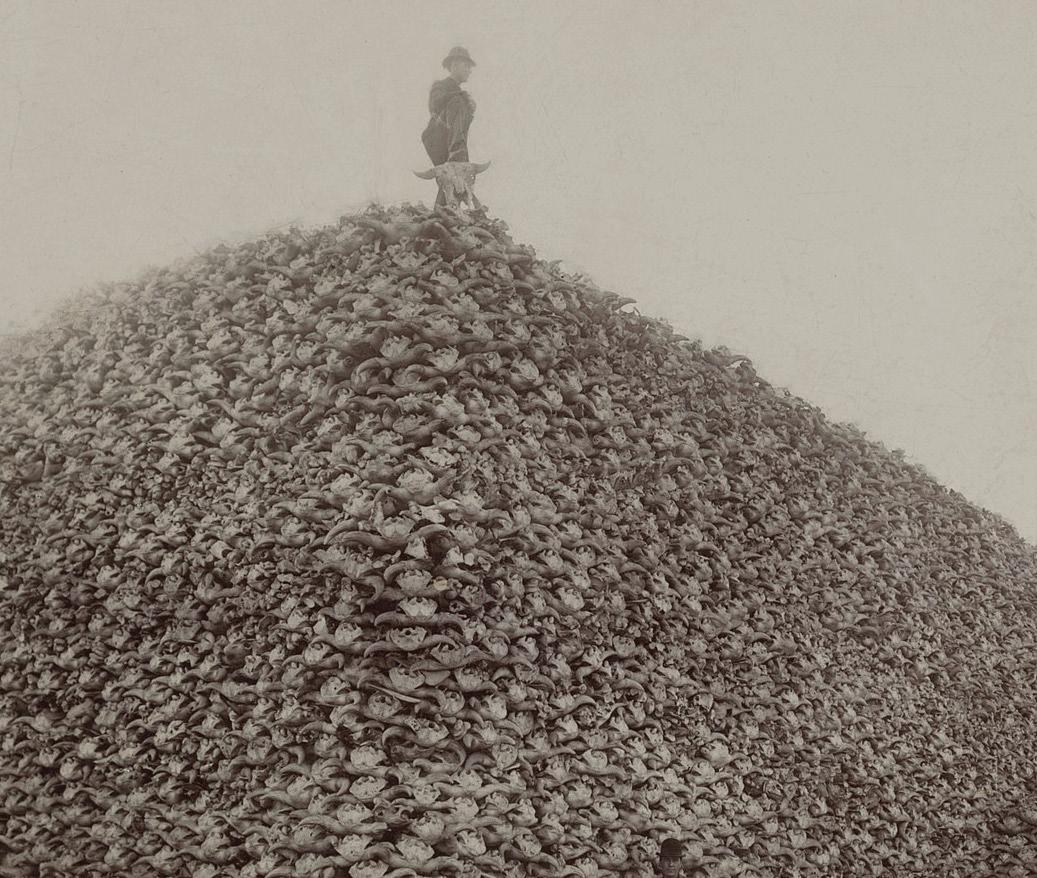
Photograph Source=http://www. raeky.com/bison/, originally Burton Historical Collection, Detroit P
VOL. 31 // ISSUE 12 WEDNESDAY, OCTOBER 11, 2023 16
An Uncertain
F u t u r
He reaches out to touch the rough granite obelisk. It’s close to 8 p.m., and yet the grassy knoll on which he stands is bathed in daylight. Twin mountains, rocky and naked, stand in the distance on the other side of a wide inlet. He hears the waves, gently lapping on the shore a short distance from him, but he cannot smell the brine of the ocean. He hears the calling of seabirds, but cannot see them soaring above his head.
His palm strokes the rough surface of a megalithic dolmen: an entry marker to an ancient burial tomb. He cannot enter, but he’d read a description of the site, and feels he knows what to expect. He’s more interested in the rocks anyway, curious how primitive humans would have moved the massive objects — not so interested in the why.
Sensors transmit information to the gloves he's wearing, causing tiny vibrations to ripple through his palm and fingertips. He makes a slight adjustment to look behind one of the standing stones, but sees that there is a missing patch in the rendering. It frustrates him. Stonehenge was better, he thinks, before remembering that this location was included as a free bonus. Still, he considers it a second-rate product, and asks his virtual assistant to remind him to leave a review.
eHe opens a small window in the corner of his fieldof-view, and selects an image. Instantly, a vibrant, semi-opaque menu is superimposed on the landscape. Even though it’s projected mere millimeters in front of his eyes, it appears to hover at arms-length just in front of him. He reaches out a hand and scrolls through the menu: Serpent Mound, Ohio; Machu Picchu, Peru; Knossos, Crete. He’s unsure where to explore next.
A notification window pops up from the bottom of the screen with a news bulletin: “Last known Orangutan dies in captivity.” Oh no, he thinks, lingering for a moment on the image in somber reflection before clicking back to the menu. Gesturing with his hand, the options scroll past in a blur until they halt at the top of the menu, with “Angkor Wat, Cambodia” displayed. I think that’s where Orangutans lived, he ponders. They didn’t. They lived in the jungles of Borneo, and Sumatra — and for a time — in the transience of human memory.
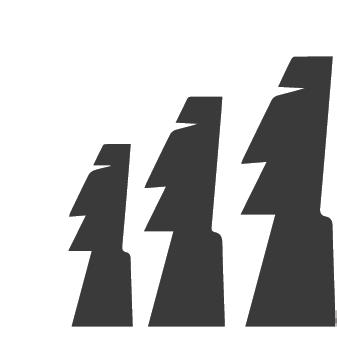
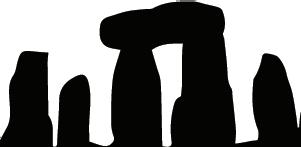

VOL. 31 // ISSUE 12 WEDNESDAY, OCTOBER 11, 2023 17
Event Coverage //
culture@ufvcascade.ca
Culture Editor - Jayden Talvio
Showcases shine at A Celebration of Community event
Semi-casual event with exquisite cuisine and a friendly atmosphere.
JAYDEN TALVIO
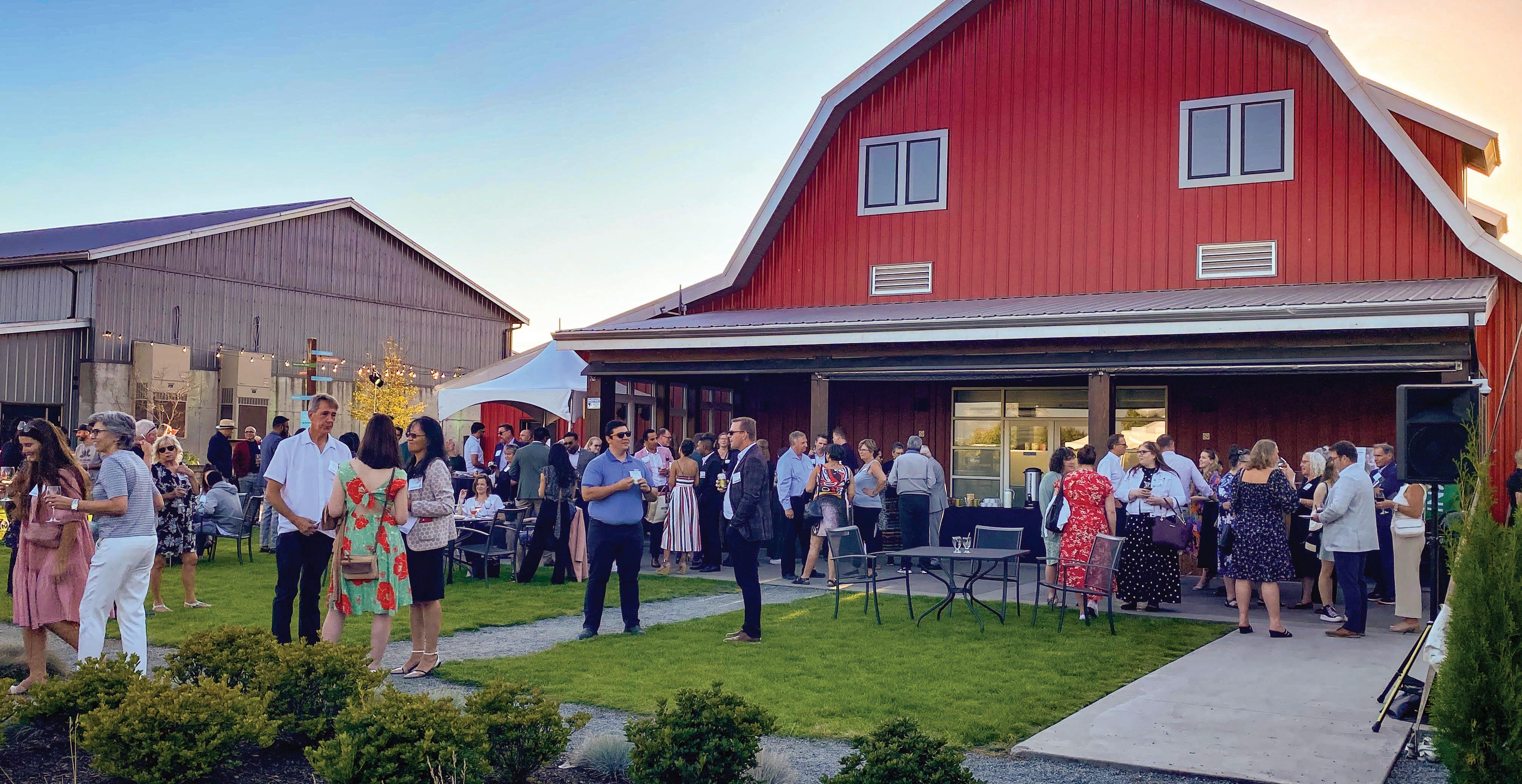
A colourful garden party dress code; the soothing sounds of cello, violin, and guitar; and sophisticated cuisine: seared scallop with smoked onion jam, goat cheese on a puff pastry, beet tartare, and beef Wellington. All this and more made St’elt’elawtexw — A Celebration of Community an illustrious fi nal ode to the summer season.
On Sept. 14, a collection of local showcases gathered at EcoFarm to enjoy an eventful, yet relaxing evening thanks to the ambiance created by the band. The fi rst showcases I checked out belonged to UFV: Centre for Education and Research on Aging (CERA), Food and Agriculture Institute (FAI), Enactus, Peace and Reconciliation Centre (PARC), and a student welding venture called Project Python. As someone who doesn’t know anything about welding, I can’t speak on the technical aspects of Project Python, but I can say that it looked as professionally crafted as something you would fi nd at a high end store.
I sampled a roasted beet tart at Little Sprout Café: green pea whipped goat cheese, candied pecans, balsamic, and house-grown pea shoots. It was like nothing I’ve ever tasted before. If you want to
feel healthy, I recommend trying this dish. Artisan Sake Maker offered samples of their apple yuzu sake cooler. As someone with a sweet tooth, this was the perfect type of sake for me. I was initially hesitant to appraise the blueberry lavender radler at Farmhouse Brewing Co. because I’m not much of a beer drinker. However, it didn’t taste like beer to me — it tasted like juice — so it exceeded my meagre expectations. The alcohol wasn't the only effervescent aspect of the event. The people running the Archway Community Services’ Urban Farm showcase were very bubbly, and they graciously housed my many drinks while I toured their idyllic display.
The award procession featured many prominent UFV staff who gave thoughtful speeches for the occasion: acting president and vice-chancellor, Dr. James Mandigo; president and vice-chancellor, Dr. Joanne MacLean (virtually); chair of the board of governors, John Pankratz; vice president of community engagement, Susan Mide Kiss; and associate vice president of research and graduate studies, Garry Fehr. I was pleased with the recognition towards UFV alumni when Tony Dhaliwal, chair of the UFV
Association, presented the UFV Young Distinguished Alumni Award to Eryn Braley.
I was fortunate enough to speak with Susan Mide Kiss about the value of community. “Community engagement is at the heart of UFV’s mission,” said Mide Kiss, “as it embodies our commitment to making a meaningful difference in the communities we serve.” In my opinion, this event was an excellent display of how UFV stays true to its spirit. A local band, Good Medicine Songs, gave such a moving performance that they received a standing ovation. They particularly touched the hearts of the crowd when they made their debut performance of “Love With Pride.” They prefaced the song by saying that they wanted to perform it in light of the theft and vandalism that always seems to occur whenever Pride flags are displayed on campus. Several Ripple Maker paddle awards were handed out to UFV’s donors, and I was blown away by how generous these donors were — total donations were in the hundreds of thousands of dollars.
Shortly before departing on the shuttle bus, I heard that EcoFarm was offering
free ice cream, so I scampered back to get some. That treat was the icing on the cake to an already fabulous evening filled with generosity, respect, and a feeling of shared community among UFV, the greater Fraser Valley region, and beyond. Following the event, Mide Kiss conveyed an invitation: “Whether you are a student, an alum, a staff, a faculty member, an organization, [a] group in the Fraser Valley community, or someone eager to make a positive impact, there are countless ways for you to get involved. To learn more, please contact us.” Check out the UFV 2023 Community Report on Issuu for more details on this enjoyable evening.
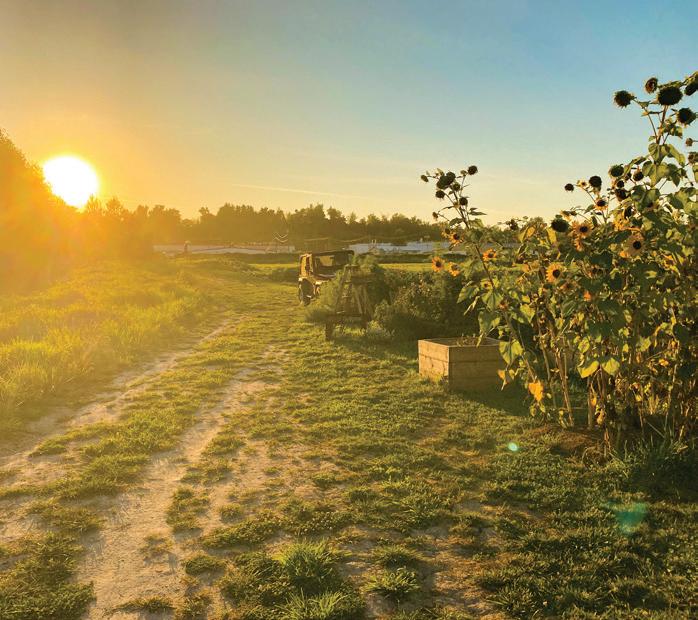
18 VOL. 31 // ISSUE 12 WEDNESDAY, OCTOBER 11, 2023
Photography by Jayden Talvio
CULTURE
Alumni
Event Coverage // UFV Theatre and the search for “climate optimism”
Director of SoCA discusses an upcoming opportunity to get involved in an artistic response
to climate change
VERONICA POWELL
UFV’s School of Creative Arts (SoCA) is inviting students, staff, and everyone in between to take part in the upcoming Climate Change Theatre Action (CCTA) Festival. The event is a series of five-minute theatrical productions from the original works of 50 international playwrights. The festival, which takes place every two years, will be held from Nov. 21- 24, and is intended to raise awareness and generate conversations about climate change. I had the opportunity to speak to the director of SoCA, Shelley Liebembuk, about the upcoming festival.
Art can be an effective way of spreading
Event Coverage //
important messages and changing minds. Liebembuk hopes her work will inspire “climate optimism” and that the festival will empower people to address the subject of global warming. “I think in my experience, climate change related artworks are really impactful. Obviously they're sobering, but they can also help us recognize the ways that we can be agents and not just feel overwhelmed by it.”
Some of the productions are the opposite of dreary story-tellings. “My students are always surprised at how many of the plays are comedies,” she said. “It's this chance to laugh — like a deep belly laugh — about something that is quite terrifying.” Climate change can be “really overwhelming and difficult to address,” said Liebembuk. “I
think what’s exciting about the opportunity to participate in the festival is that the different scripts and their different perspectives give us a fi rst entry point to discussing climate change together.”
The CCTA invites all learning institutions to freely get involved with the newly created material. “I think what’s so amazing here,” said Liebembuk, “is that we have access to fifty short plays that are written right now, responding to [conditions] right now, from global perspectives.” The CCTA wants the project to be widely accessible, so it expands beyond just the theatre department. “We’ve invited all of the faculty across the School of Creative Arts to try and incorporate it into their classes in some way.” Students can read the plays that have
been created for the festival and decide how best to bring the words to life; even working on “various iterations” if they choose. “There’s some Canadian playwrights there, but there’s also playwrights from everywhere, so a lot of different perspectives.”
Fortunately, students don’t have to wait to get involved with the CCTA. “We [currently] have copies of all our plays in both our student lounges and Buildings C and D as well, so students can read them, and if students decide that they want to do something with them, they can.” Ultimately, Liebembuk is grateful to have unfettered access to such relevant and important material addressing the climate crisis. "It's a really wonderful gift."
Chowiyes-Xwithet event inspires hope for Indigenous reconciliation
Astounding musical performances, basket giving, and working towards social justice.
JAYDEN TALVIO
I had the privilege of witnessing Good Medicine Songs’ incredibly touching performance at the Chowiyes-Xwithet/ Rise Up-Wake Up event. I could feel the respect and sorrow towards Indigenous communities emanating through their vocals, and the harmonization between the singers, paired with their chanting, gave me chills throughout the ceremony. It was the second time I’d seen them perform.
On Sept. 28, a sea of people wearing orange shirts were in attendance for this Chilliwack concert paying respect to Indigenous communities for the National Day for Truth and Reconciliation. Singing and drumming as they entered the Gathering Place, Good Medicine Songs spoke of 215 Indigenous children found at the former Kamloops Indian Residential School, and how they were inspired to write the song, “Chowiyes-Xwithet/Rise Up-Wake Up.” A call to action, the song implores the listener to “wake up” to the tragedies faced by Indigenous communities. The group performed it with the help of local students from the secondary school, Imagine High — a beautiful way to educate the younger generations about the importance of reconciliation.
Active president and vice-chancellor of UFV, James Mandigo, spoke of how the “atrocities” of the residential school system
Photography by Jordon Fernandez
did not deter the strength of the Indigenous community. I could sense the strength of the Indigenous people who volunteered to share their family members’ experiences with the residential school system. One of these volunteers spoke of how, when he was in the process of reconnecting with his deceased ancestor’s spirits in Kamloops, he felt an evil presence trying to stop him, so he laughed at them.
In a moment that will go down in UFV’s history, assistant professor of Indigenous studies and member of Good Medicine Songs, Dr. Lolehawk Laura Buker, gifted her family’s basket to UFV as an “affi rmation of trust” towards the school. I had the pleasure to ask Buker, who is a river woman, Stó:lō, and a member of the Lake Babine Nation, more about why she gave UFV such a valuable gift. “My mom and grandma and uncles, they didn't really have the opportunity that I got to have,” said Buker. “And those baskets that surrounded our home, they represented our hold on our own family and our traditions and the respect given to the relatives, the cedar, the salmon. Education meant everything to my mom and my grandma and my uncle.” She emphasized, “it's a humble thing to give. And yes, that basket meant a lot, but it is also for everyone.”
“Reconciliation in 2023 for me is about a process. It's ongoing, and some of it is quite a surprise that more people than not that come through my circle are willing to
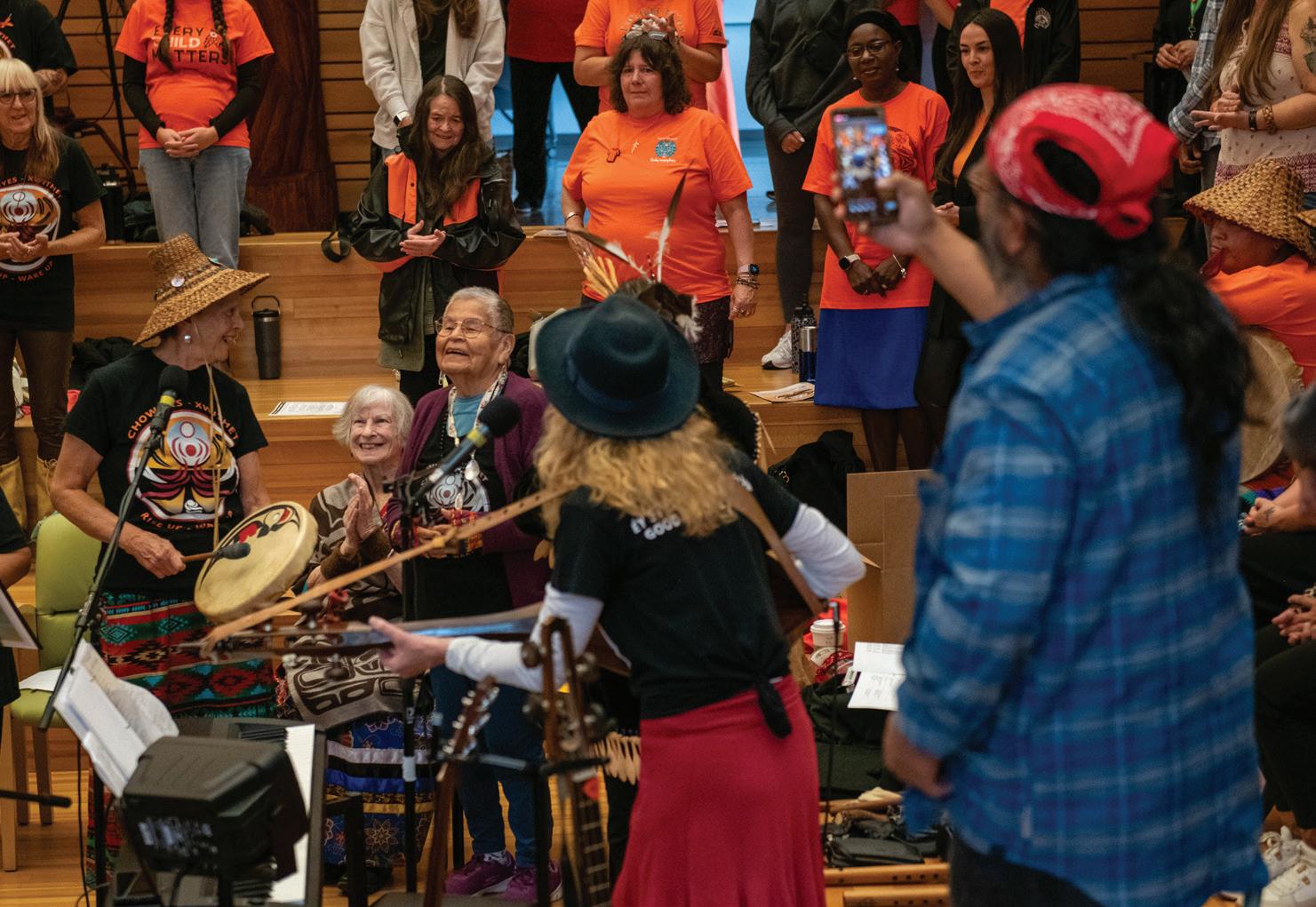
inform themselves, educate themselves. And I see it in my students, they are coming with more knowledge of residential schools and the harms of the laws that were so suppressive. And that makes for more, deeper conversation[s] and a way forward.”
I was also honoured to speak with Holly Arntzen. Arntzen is a singer/songwriter/ producer with eco-rock group The Wilds and the Artist Response Team, as well as a member of Good Medicine Songs. “I feel so grateful to be involved in this process of creating songs in the Halq'eméylem
language and in English,” said Arntzen, before speaking to what reconciliation means to her. “Being in [a] relationship with… everybody in Good Medicine Songs and the broader Stó:lō community. To have that gift, to be able to have relationships that are based on time and experience together and a common love.”
Students can fi nd Buker’s family’s basket above the entrance door of the Gathering Place.
19 VOL. 31 // ISSUE 12 WEDNESDAY, OCTOBER 11, 2023
CULTURE
Study Break
The Cascade Kitchen: Homemade Pizza








JAYDEN TALVIO
The Cascade Kitchen is a student-run food column that brings you budget-friendly recipes and cooking tips. Check back weekly for something new to try in the kitchen, or if you want to see your own recipe featured next, get started by reaching out to culture@ ufvcascade.ca.
The “kitchen sink pizza” is a tradition that I take on from my great-grandmother. She used to throw whatever was in her refrigerator onto her pizzas. I did the same here. Although I added quite a few ingredients, feel free to personalize it and add as much or as little to it as you’d like. Of course, feel free to add other toppings too. If you have a breadmaker, use it!
Cook Time: 8-10 minutes
Serves: 2
Ingredients:
* 1 ⅓ cups water
* ¼ cup olive oil
* 4 ¼ cups all-purpose flour
* 1 ¼ tsp salt
* 1 tbsp sugar
* 2 ½ tsp active dry yeast
* 1 cup tomato sauce
* 150 ml tomato paste
* 1 tbsp Italian seasoning
* ½ tsp garlic powder
* 2 cup shredded cheese
* 20-30 slices of salami
* 2 strips of bacon (cooked)
* 1 pepper
* ¼ cup onions
* 1 cup spinach
* ¼ cup sundried tomatoes (drained)
Method:
1. Preheat the oven to 425 degrees.
2. Combine water, olive oil, flour, then salt, sugar, and active dry yeast into a large bowl, respectively. Mix.
3. Cover with a tea towel and let it rise. Should take 1-1.5 hours.
4. Add a small amount of all-purpose flour onto the counter. There, knead the dough, then roll it until it’s about ¼ inch thick.
5. Mix tomato sauce, tomato paste, Italian seasoning, and garlic powder together in a small bowl.
6. Put pizza on a sheet pan.
7. Put tomato sauce mixture evenly on top of pizza, leaving the edges bare. Then, put all your desired toppings on, leaving the cheese for last.
8. Bake for 8-10 minutes.
9. Take it out of the oven and let it cool down on a cooling rack. Finito!
Recipe adapted from Regal Automatic Breadmaker Guide and Cookbook.
Enjoy!










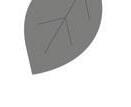




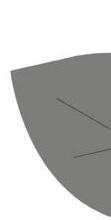



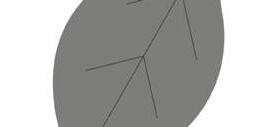

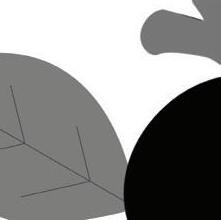
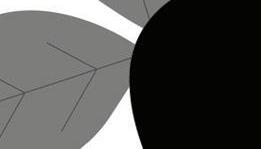




20 VOL. 31 // ISSUE 12 WEDNESDAY, OCTOBER 11, 2023
17 6 9 3 7 5 3 4 8 8 3 24 6 6 9 8 4 3 5 4 6 3 8 7 5 2 4 6 9
9 5
Photography
by | Jayden Talvio
3
Sudoku //


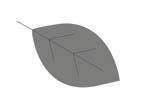
Down:
1. the _____ e ect happens when atmospheric
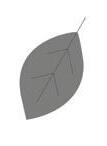
Across:
2. a type of species that is essential to its gases trap heat above the Earth's surface ecosystem
3. _____ fuels: leading cause of global warming
5. this is the layer of the stratosphere that
4. the decaying of organic matter that's absorbs UV radiation catalyzed by microorganisms
6. variety of di erent life forms on Earth
8. a harmful gas that cows, and anthropogenic consumer goods sources, release into the atmosphere
7. tiny pieces of debris that can originate in
10. a type of rain that has dangerous chemicals of humans in an eco-conscious way in it
Horoscopes //
Your weekly life predictions made by J. Talvio.
Aries - Mar. 21 to Apr. 19









9. _____ development aims to meet the needs

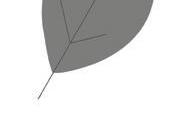
This October, Aries, you're as fiery as the autumn leaves! As school proceeds and leaves fall, your eco-spirit is aflame. You'll tackle sustainability like it's the final exam you totally didn't procrastinate on.
Taurus - Apr. 20 to May 20
Wow, Taurus, your quest for knowledge is like the changing seasons: unstoppable. Swap out that old textbook for a treehugger's guide to sustainability. Who knew saving the planet could be so fabulous?
Gemini - May 21 to Jun. 20
Gemini, your dual nature can be put to good use this October. Reduce, reuse, and recycle — but remember, you can't clone yourself to avoid taking out the compost. Embrace the environmental cycle of life!
Cancer - Jun. 21 to Jul. 22
This October, Cancer, you'll be a nurturing force of eco-friendliness. Embrace your inner green-thumbed scholar. Plant a garden, decorate with autumnal leaves, and watch your sustainability efforts bloom like your Pinterest board.
Leo - Jul. 23 to Aug. 22
Leo, let your inner sunshine radiate this autumn. Host a vegan pumpkin spice latte party and dazzle your friends with your eco-chic sense of style. Just remember, humility is the secret ingredient, not cinnamon.
Virgo - Aug. 23 to Sept. 22
Virgo, it's time to Marie Kondo your life and declutter with purpose. Donate those old clothes to thrift stores, where they can lead fulfilling second lives as “vintage finds.” Your closet will thank you, and so will the planet.






Libra - Sep. 23 to Oct. 22

With your birthday season in full swing, Libra, you're in for a treat. Embrace the spooky vibes and transform your social gatherings into haunted soirées. Connect with your inner ghost and float through October with grace.
Scorpio - Oct. 23 to Nov. 21
Scorpio, your intensity knows no bounds. Channel that energy into cleaning up local parks or organizing an eco-protest. Remember, it's not stalking if you're just following people to get them to recycle.
Sagittarius - Nov. 22 to Dec. 21
Adventure is calling your name this October, Sagittarius. Take a break from the classroom and explore the great outdoors. Connect with your inner wanderer and let the autumn winds carry you to new heights.
Capricorn - Dec. 22 to Jan. 19
Capricorn, you're the master of productivity. This October, tackle your envirogoals like a boss. Ditch plastic straws, bags, and excessive packaging. You're not just saving the environment; you're also saving money!
Aquarius - Jan. 20 to Feb. 18
Aquarius, your quirky, offbeat approach to life is a breath of fresh air. This October, let your inner environmental eccentricity shine. Turn your school projects into avant-garde statements of sustainability that leave everyone questioning the status quo.
Pisces - Feb. 19 to Mar. 20
Pisces, you're the dreamer of the zodiac, and this month, your dreams are all about saving the planet. Dive into the world of environmental consciousness with your poetic flair. Your eco-inspired verses might just spark a green revolution.
21 VOL. 31 // ISSUE 12 WEDNESDAY, OCTOBER 11, 2023 Study Break 1 2 3 4 5 6 7 8 9 10
// ANSWERS: 1. Green House 2. Keystone 3. Fossil 4. Biodegradation 5. Ozone 6. Biodiversity 7. Microplastics 8. Methane 9. Sustainable 10. Acid
Crossword
Video Games //
Baldur’s Gate 3 lets you do what your Dungeon Master won’t
Throw a child, bite that gnome, or feed the wizard your unwanted jewelry; it’s all here folks
ALLANA QUIGLEY
Larian Studios’ latest release, Baldur’s Gate 3, has had me living in a fantasy world for days. Few games have captured me like this one has; it could be this year’s perfect escapism simulator. Baldur’s Gate 3 takes the vast world and tabletop gameplay of Dungeons & Dragons, and turns it into a near-perfect story-driven turnbased video game. Play with your friends or by yourself; each time you do, the game gives you an opportunity to see something completely different.
Although the character creator is limited when it comes to customizing most of your body, the game still gives you more than enough to work with to get your journey started. Elves, dwarves, tieflings, dragonborn, halflings, and all the other species of player creatures from the 5th Edition Player's Handbook are here, as well as the Githyanki, who appear in various expansion materials. You also have the option to choose a premade adventurer, each with







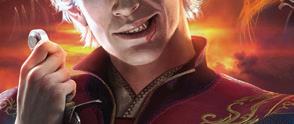
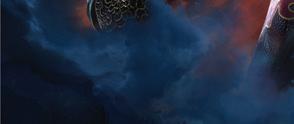

Movie Review //



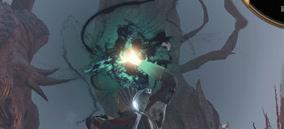



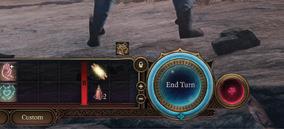
their own unique backstory. These premade “Origin Characters” make it enjoyable to come back for a replay, as they come with special events you aren’t able to see if you decide to construct your own character. Once you’ve set off on your adventure in the Faerûn (after being flung from the helm of an interdimensional alien vessel), the fi rst thing you’ll discover is that this game is full of lovely companions to befriend, bully, and even romance. There are opportunities throughout the game to recruit characters that you’ll recognize from the character creator, plus some familiar faces from the
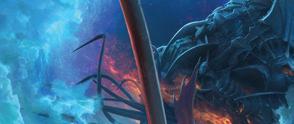




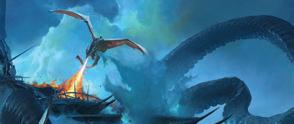

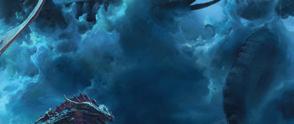

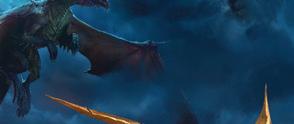
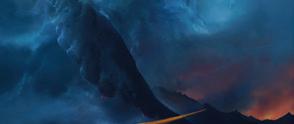



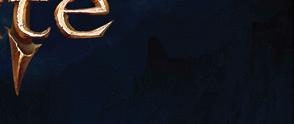
previous Baldur’s Gate titles. Assemble a team of four adventurers out of the ten that are available and set off to bend the story to your will.
The combat is easy to learn and fun to master. You’re encouraged to get creative in your encounters, as fights rarely take place on a flat battlefield. Sometimes, depending on pre-battle dialogue, you might fi nd yourself with extra allies (or enemies). The epic size and scope of the combat makes you feel as if you’re really fighting alongside your fantastical allies in a grand battle: wizards shooting fi re and lightning from the rafters, enraged barbarians cleaving their way through the hoard, and bards performing inappropriately timed lute solos. Gather a stockpile of explosives, or use one goblin as a weapon against another. There are so many ways to approach each fight!
So far, all of my playthroughs have run over the 100-hour mark, and each one has yielded a totally different ending depending on the major choices I made throughout the story. Whether you opt to act righteous, sweet, or despicable, the game adjusts to your decisions and serves up the consequences. Although I didn’t see everything or do every quest on my fi rst run, the ending from that playthrough still felt complete. During replays of the game I’ve had fun using what I’ve learned from previous save files to experiment. The more you invest yourself in the story, the more you’ll get out of it. Something that seems benign can set off a whole series of events that span all three acts, so if you go looking for quests and activities, you will fi nd them in nearly
Franchise Frenzy: My Big Fat Greek Wedding 3
Are they giving us more of our favourite characters for the right reasons?
KIARA OKONKWO
We live in an age of remakes, reboots, prequels, and sequels. Hollywood, for all their wealth and influence, will take every opportunity to sell us yet another iteration of something we love — even at the risk of sullying the original. Like children, we are spoon-fed recognizable narratives while producers and execs eagerly wait for us to beg for more. (Sex and the City reboot And Just Like That…, anyone?) The chance to see our favourite characters on screen again
every corner of this game.
The writing really shines the most in this game. There are minor characters you encounter throughout the story that develop and grow, even though they aren’t important to the greater story. I loved getting to see characters I had previously interacted with showing up again, and being able to catch up on things that had happened to them since our last encounter. Even more satisfying are the stories of your traveling companions. These are the stories you’ll get invested in (and possibly cry over) that will give you the motivation to do occasionally unspeakable things in the name of seeing their little notification of approval popping up in the corner of your screen. They each have their own goals and moral compasses that may or may not align with your own.
Baldur’s Gate 3 is defi nitely a time sink, but it’s one that I’m happy to descend into. You don’t have to know Dungeons & Dragons or the previous two installments in the Baldur’s Gate series to have a great time. If you’re even mildly interested in fantasy settings and storytelling, this game is for you. It’s fun, well-paced and, at times, downright hilarious.
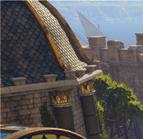


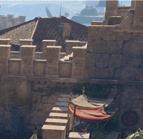
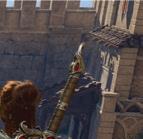
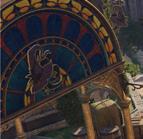
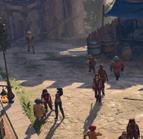

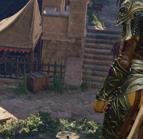



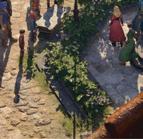
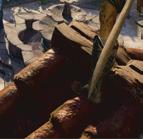
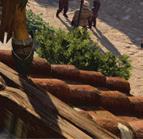
invokes feelings of nostalgia. It offers us an opportunity to look back at who we were when the original came out and reflect on where we are now. Times are changing quickly, and studios are more eager than ever to capitalize on our nostalgia before it fades away forever.
Cue My Big Fat Greek Wedding 3, another sequel to, you guessed it, My Big Fat Greek Wedding. I attended a Tuesday discount showing with my mother and her friends. The theatre was buzzing with excited generation Xers, a demographic often overlooked by studios, who usually target baby boomers and millennials when it comes to
nostalgic media. Twenty-one years ago our main character, Toula (played by Canadian screenwriter and director Nia Vardalos) navigated the cultural divide between her traditional Greek family and Ian, the non-Greek man she fell in love with. My mother — who remembers the film fondly as a popular rom-com of her mid-twenties — recited lines and catchphrases the entire way to the cinema.
Toula is now in her forties and grappling with the recent death of her father and her mother’s worsening dementia. Paris, her college-age daughter, is uncommunicative and distant. Her husband Ian remains the
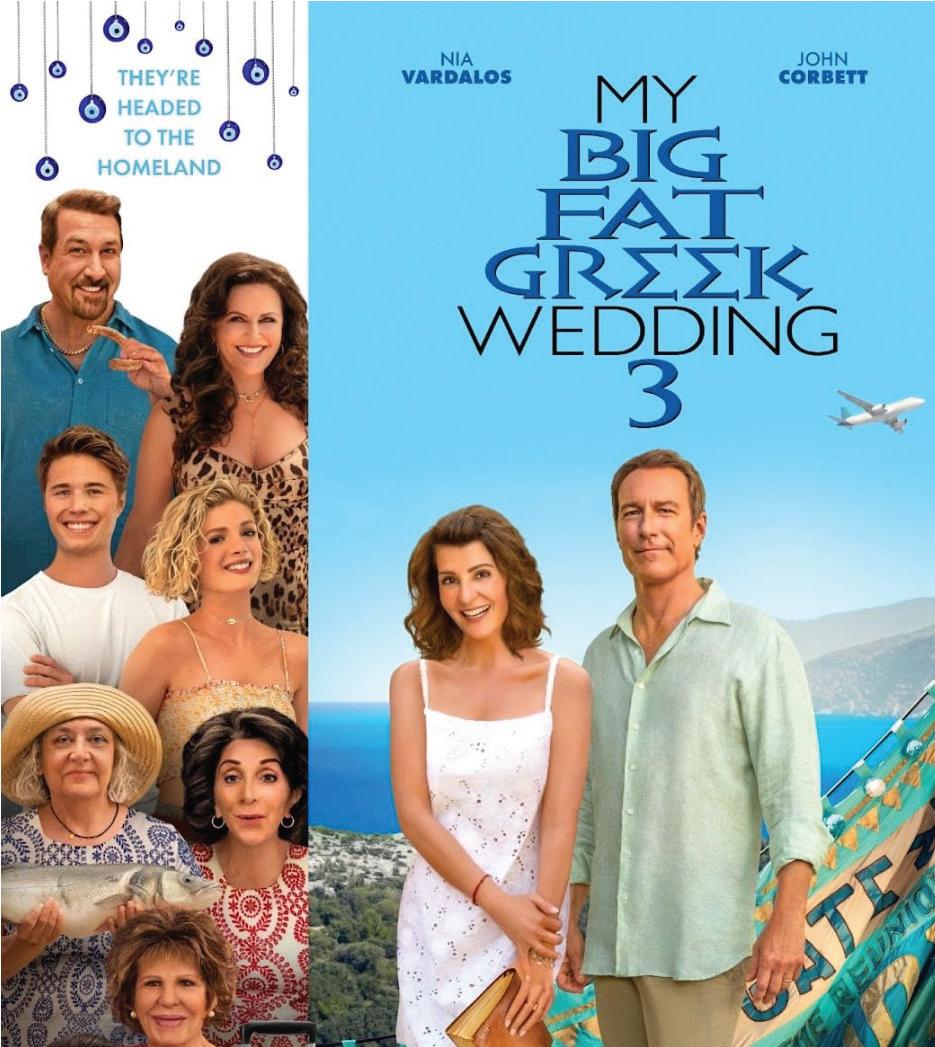
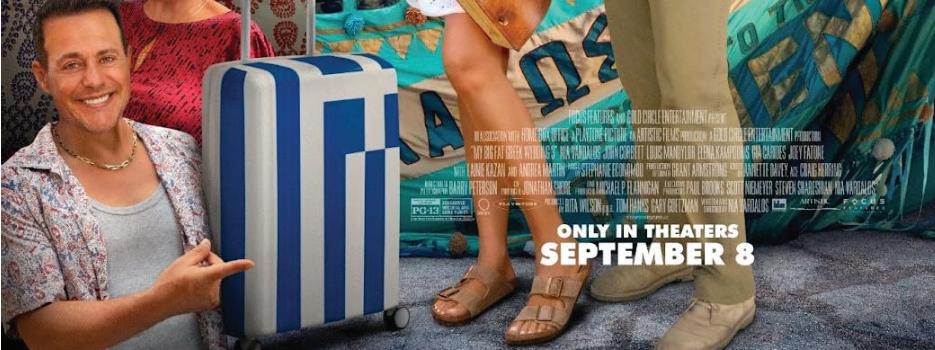
22 VOL. 31 // ISSUE 12 WEDNESDAY, OCTOBER 11, 2023 Photography by | BALDUR'S GATE 3 (2023) Larian Studios | Allana Quigley | Focus Features (2023) Movie Poster
Arts Editor — Ginna ARTS
arts@ufvcascade.ca
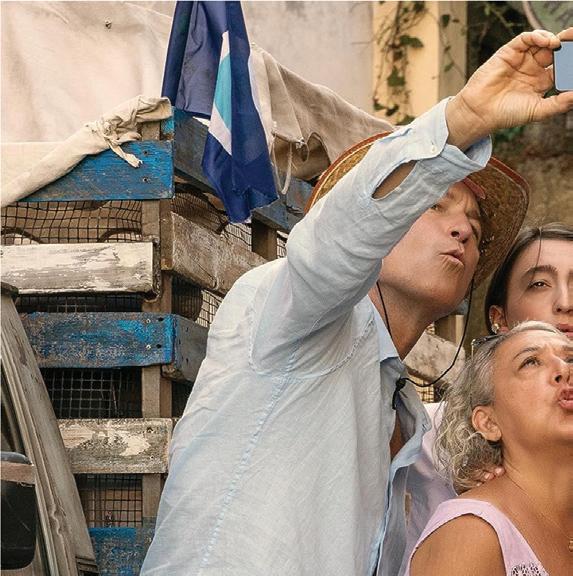
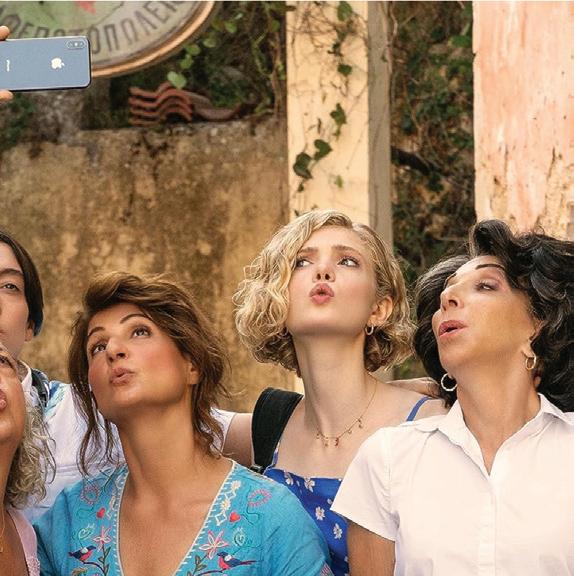

only normal and stable force in her crazy Greek life. What follows is a pilgrimage to fulfill their beloved pappous’ dying wish: travel to his childhood village on a remote Greek island to deliver his journal to his three best friends, whom he has not seen since immigrating to America in his youth. Did the original film need to become a franchise? Probably not, but it’s nice to see the characters develop and change.
The Portokalos siblings grappled with life changes together, shouldering the burden of familial responsibility once held by their parents. Toula came full circle: as a victim of her overbearing father, becoming a wife and mother, and eventually learning to allow her daughter to have autonomy over her mistakes. Though Paris didn’t really fi x her problems, she did face the parts of herself that were hard to look at — an accomplishment for any 20-something. True to its roots, there’s an overarching theme of acceptance, because we can’t choose our family. I admit I shed a few tears as they yelled, ate, and dug deep to show each other love, support, and care.
I gladly accepted this spoonful of Hollywood sentimentality (despite its nausea-inducing editing), because it gave me the chance to spend time with my mother, and that’s what Pappous would have wanted. As we walked from the theatre and

back to our cars, we had the chance to release our inner critics. After listening to the positive reviews from her friends, I turned to my mother, eager to hear her opinion. “It was okay…” she said, before forcing me to watch the original when we got home.
My Big Fat Greek Wedding 3 is a modest movie that reflects its aging audience and allows them to share an old favourite with their loved ones in a new way. Ultimately, the Portokalos clan emerges from their travels closer than ever — a testament to how far we are willing to go for those we love, despite what shortcomings or failings they may have. Sometimes, time and distance are no match for the ways we are connected.







CHARTS SHUFFLE





GLISHA - LOVE MYSELF LOUDLY
Glisha has been a feature of the Fraser Valley Music Awards (FVMA) world since she was nominated for the fi rst time in 2020. Since then, she's won in multiple categories, and came fi rst-place at this year's Dakota Leslie Memorial Fan Vote. I've also previously shu ed her upbeat tune “Staycation.”
JENNY


BANAI - WATER
Another multiple-time Fraser Valley Music Award Winner, Jenny Banai, pressed her video-accompanied vinyl LP couchwalker with fi nancial help from CIVL and the FVMAs. She also played at Mission Folk Music Festival with her band a couple years back as part of a separate prize we o ered.





SAMMI MORELLI - LOVE AWAY
Going way back into Abbotsford local music history, Sammi Morelli was a fi xture of the Ethical Addictions Co ee House scene: a locally owned Abbotsford based co ee shop that was home to the then-burgeoning local DIY music community. Morelli resurfaced at the FVMAs in 2022 and received a Fraser Valley Music Award for Excellence by a Queer Artist.
KIMMORTAL - K I'M MORTAL

Playing in Toronto this month with legendary FVMA winner Mauvey (who was featured in the shu e last week), Kimmortal is not an FVMA nominee. That’s because they are Vancouver's resident non-binary hip hop artist extraordinaire these days. They even headlined our local free festival Jam in Jubilee in Abbotsford this summer!





23 VOL. 31 // ISSUE 12 WEDNESDAY, OCTOBER 11, 2023 01. HAVIAH MIGHTY Crying Crystals 02. JESSY LANZA Love Hallucination 03. PARIS TEXAS MID AIR 04. NABIHAH IQBAL DREAMER 05. MAUVEY Before The Album 2: A Brief Overview 06. SAINT SOLDIER The Way of The Artist 07. KIMMORTAL Shoebox 08. HALF MOON RUN Salt 09. BULLY Lucky For You 10. ADAM RUZZO The Waters That Bind 11. DIZZY Dizzy 12. BABE CORNER Crybaby 13. TEKE::TEKE Hagata 14. ASTROCOLOR Moonlighting - Astrojazz Vol. 1 15. TABI YOSHA True Colors 16. HOMEBOY SANDMAN 17. CODY LAWLESS Sunshine State of a Happy Camper 18. WESTERN JAGUAR Oblivion 19. THE SYLVIA PLATTERS
Photography by | Focus Features (2023) Arts
Note: Some of the events require tickets, and most are online. If something catches your eye, take to the Internet for more details, including those about any saftey measures for in-person events.

10:00 - 11:00AM Career Coaching Drop-In @S1111
11:00 - 12:00PM Working with Emotions – Not Myself Today @ONLINE
11:30 - 01:00PM Campus Engagement Expo – Canada Education Park (CEP) @Chilliwack campus at Canada Education Park
12:00 -01:00PM Equity Diversity Inclusion 101 @Chilliwack campus at Canada Education Park
12:10 - 12:50PM Self-Care Yoga @E150
03:30 - 04:00PM How to Apply and Get to Know UFV webinars @ONLINE VIA ZOOM
04:05 - 04:45PM Dance Groove @E150
09:00 - 03:00PM CERA Day 2023 @B101
08:30 - 10:30AM Community of Practice: Assessments @ ONLINE VIA ZOOM
10:00 - 11:00AM Career Coaching Drop-In @S1111
11:00 - 02:00PM Abbotsford Job Fair - Abbotsford Career Fair @Virtual Job Fair
02:00 - 03:00PM Blackboard Ally in Practice @ONLINE
07:00PM WSOC vs Victoria Canada West regular season @Abbotsford
10:00 - 11:00AM Career Coaching Drop-In @S1111
11:40 - 12:20PM Summit Circuit @E150
12:00 - 01:00PM Braiding the Snakes: Managing Competing Priorities and Multiple Projects @ONLINE VIA ZOOM
04:00 - 05:30PM Perspectives of Global Developments @A225
07:00 - 09:30PM Mindfulness-Based Stress Reduction (MBSR) Program @ONLINE VIA ZOOM
10:00 - 11:00AM Career Coaching Drop-In @S1111
10:00 - 11:00AM Career Coaching Drop-In @S1111
01:00PM WSOC vs Victoria Canada West regular season @Abbotsford
01:30 - 02:30 PM Career Coaching Drop-In @B223
10:00 - 11:00AM Career Coaching Drop-In @S1111
12:10 - 12:50PM Self-Care Yoga @E150
04:05 - 04:45PM Dance Groove @E150
09:00 - 10:30AM Community of Practice: Culturally Responsive Pedagogy @ONLINE
10:00 - 11:00AM Career Coaching Drop-In @S1111
11:00 - 01:00PM Beyond Mindfulness – Exploring Structural Opportunities for Change in the Workplace @A225
11:00 - 02:00PM Abbotsford Job Fair - Abbotsford Career Fair @VIRTUAL JOB FAIR
12:15 - 12:55PM Spin & Strength @ E150
04:35 - 05:15PM Body Blast @ E150
09:00 - 11:00AM Burnout – Helping the Individual and Helping the Workplace Leaders @ONLINE VIA ZOOM
10:00 - 11:00AM Career Coaching Drop-In @ S1111
12:10 - 12:50PM Self-Care Yoga @E150
02:30 - 04:00PM Community of Practice: Culturally Responsive Pedagogy @ONLINE
04:05 - 04:45PM Dance Groove @E150
09:00 - 11:00AM Burnout – Helping the Individual and Helping the Workplace Leaders @ONLINE VIA ZOOM
12:10 - 12:50PM Self-Care Yoga @E150 02:30 - 04:00PM Community of Practice: Culturally Responsive Pedagogy @ONLINE
04:05 - 04:45PM Dance Groove @E150
09:00 - 11:00AM Feedback and Coaching for Improved Performance @ A225, 10:00 - 11:00AM Career Coaching Drop-In @ S1111
11:40 - 12:20PM Summit Circuit @E150
12:00 - 01:00PM Social Media and Impact on Mental Health @ ONLINE VIA ZOOM
07:00 - 09:30 PM Mindfulness-Based Stress Reduction (MBSR) Program @ ONLINE VIA ZOOM
07:00PM Bert Kreischer: Tops Off World Tour @ ABBOTSFORD CENTRE
10:00 - 11:00AM Career Coaching Drop-In @ S1111










09:00 - 11:00AM The Power of Negative Thinking: Alternatives to the B.S. of Positive Vibes and Relentless Optimism @ ONLINE
09:00 - 4:00PM Name Place Tour – Guided Cultural Road Tour (Via bus) @ Abbotsford Campus
11:00 - 12:00PM Zoom Integrations in Blackboard @ Online,
08:30 - 12:30PM Mindfulness-Based Stress Reduction (MBSR) Program @ ONLINE VIA ZOOM
10:00 - 11:00AM Career Coaching Drop-In @ S1111
10:00 - 2:00 PM UFV Open House @ Abbotsford campus
07:00 PM MSOC vs Victoria @ Abbotsford
10:00 - 11:00AM Career Coaching Drop-In @S1111
01:30 - 02:30 PM Career Coaching Drop-In @B223
07:00PM MSOC vs UBC @ Abbotsford
10:00 - 11:00AM Career Coaching Drop-In @S1111
12:00 - 02:00PM Adobe Pro @ ONLINE 12:10 - 12:50PM Self-Care Yoga @E150 01:30 - 02:30 PM Career Coaching Drop-In @B223 04:05 - 04:45PM Dance Groove @E150
10:00 - 11:00AM Career Coaching Drop-In @S1111
11:00 - 03:00 PM Fraser Valley Job Fair @ Clarion Hotel & Conference Centre
12:00 - 01:00 PM Thriving Through Difficult Conversation @ ONLINE VIA ZOOM
12:15 - 12:55PM Spin & Strength @ E150
04:35 - 05:15PM Body Blast @ E150
06:00 - 08:30PM UFV GDD Portfolio and Info Night - October 2023 @ C1422
10:00 - 11:00AM Career Coaching Drop-In @S1111
12:00 - 02:00PM Adobe Pro @ ONLINE
12:10 - 12:50PM Self-Care Yoga @E150
01:30 - 02:30 PM Career Coaching Drop-In @B223
04:05 - 04:45PM Dance Groove @E150
12:00 - 1:00 PM Equity Diversity Inclusion 101 @ B121
12:00 - 1:00 PM Wanna talk SOTL? @ ONLINE
12:10 - 12:50PM Self-Care Yoga @E150
03:30 - 04:00PM How to Apply and Get to Know UFV webinars @ ONLINE VIA ZOOM 04:05 - 04:45PM Dance Groove @E150
10:00 - 11:00AM Career Coaching Drop-In @S1111
11:40 - 12:20PM Summit Circuit @E150
12:00 - 12:30PM Incidents / near misses & hazard reporting @ ONLINE VIA TEAMS
04:30 - 06:00PM Visiting Scholar Open Talk @ K180, 07:00 - 9:30PM Mindfulness-Based Stress Reduction (MBSR) Program @ ONLINE VIA ZOOM
10:00 - 11:00AM Career Coaching Drop-In @S1111
06:00P.M MVB vs Manitoba Canada West regular season @ Abbotsford
07:00PM Jon Pardi @ ABBOTSFORD CENTRE
07:45PM WVB vs Manitoba Canada West regular season @ Abbotsford
10:00 - 11:00AM Career Coaching Drop-In @S1111
05:00P.M MVB vs Manitoba Canada West regular season @ Abbotsford
06:45PM WVB vs Manitoba Canada West regular season @ Abbotsford
10:00 - 11:00AM Career Coaching Drop-In @S1111
01:30 - 02:30 PM Career Coaching Drop-In @B223
10:00 - 11:00AM Career Coaching Drop-In @S1111 12:10 - 12:50PM Self-Care Yoga @E150
01:30 - 02:30 PM Career Coaching Drop-In @B223 04:05 - 04:45PM Dance Groove @E150
10:00 - 11:00AM Career Coaching Drop-In @S1111 112:15 - 12:55PM Spin & Strength @ E150 04:35 - 05:15PM Body Blast @ E150
&
events.

11 19 26 20 27 18 25 12 21 22 24 23 28 29 30 31 13 14 15 16 17
EVENTS CALENDAR OCTOBER
View our website for more details
current
local
on




































































































































































































































































